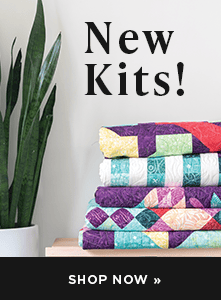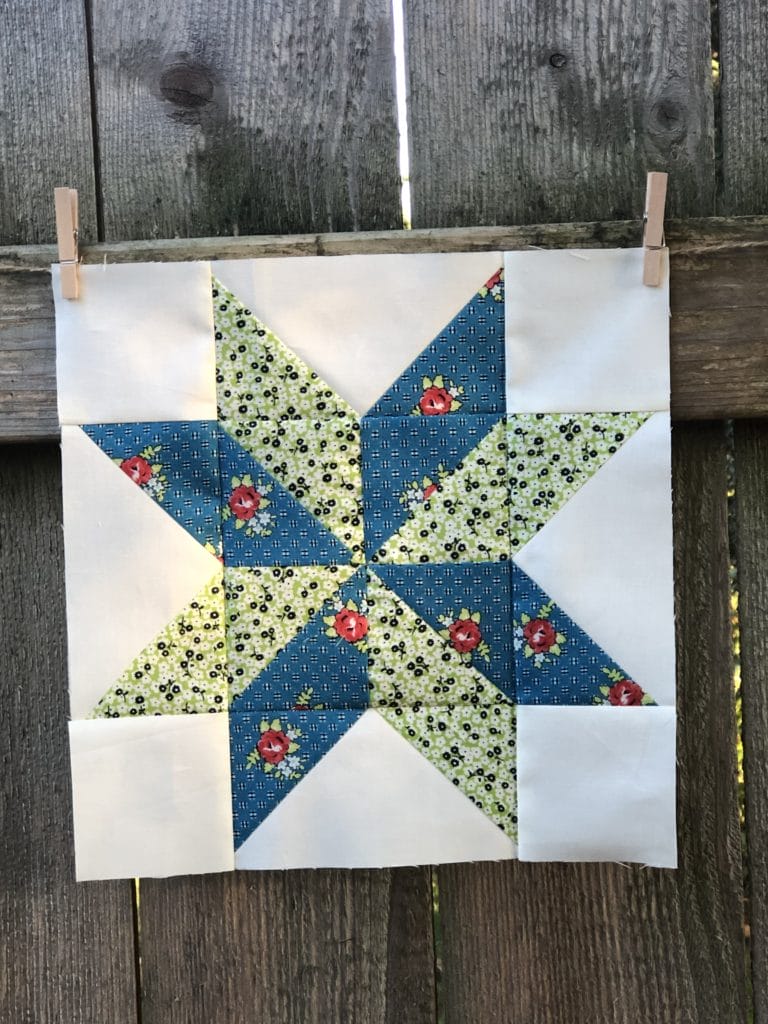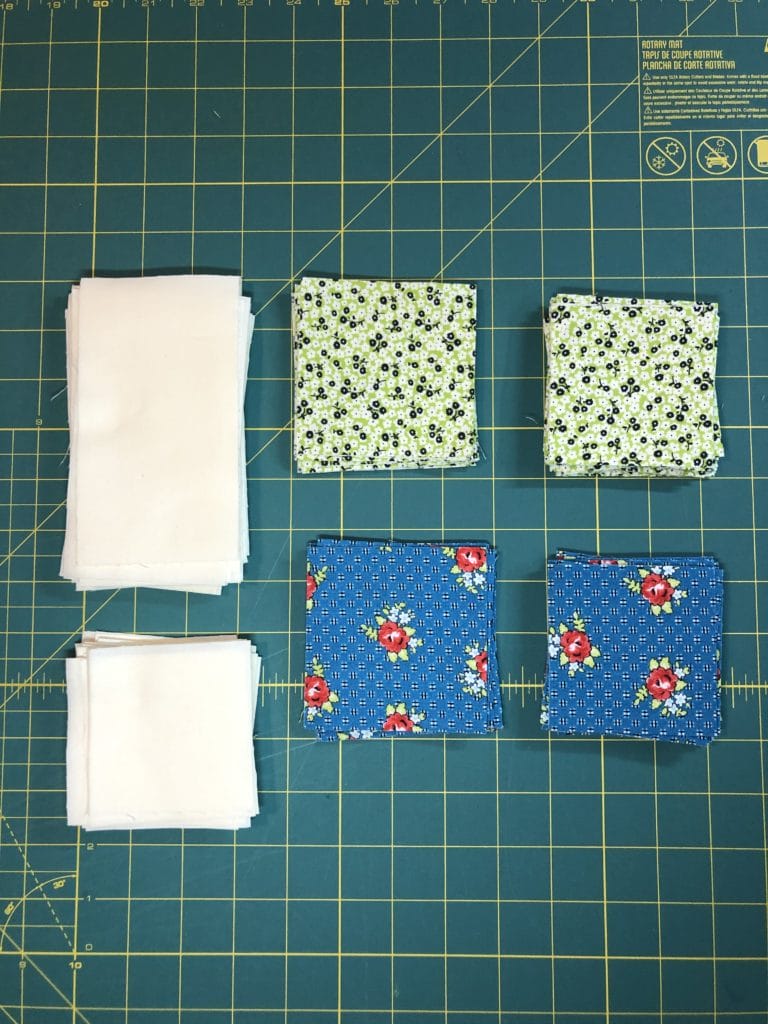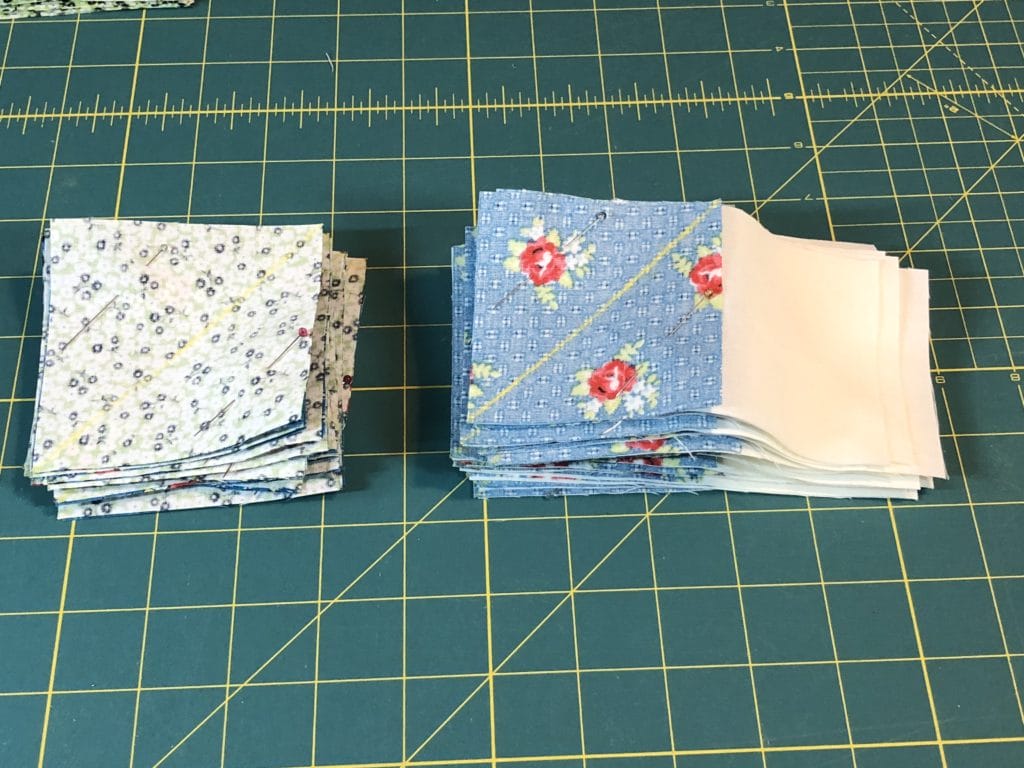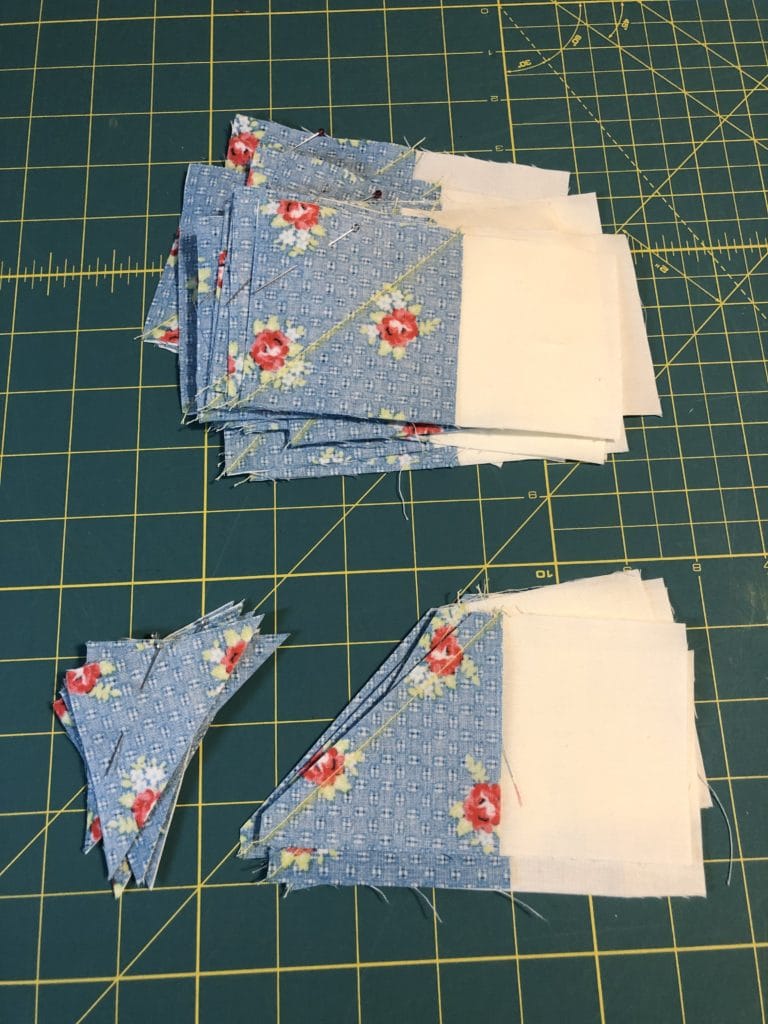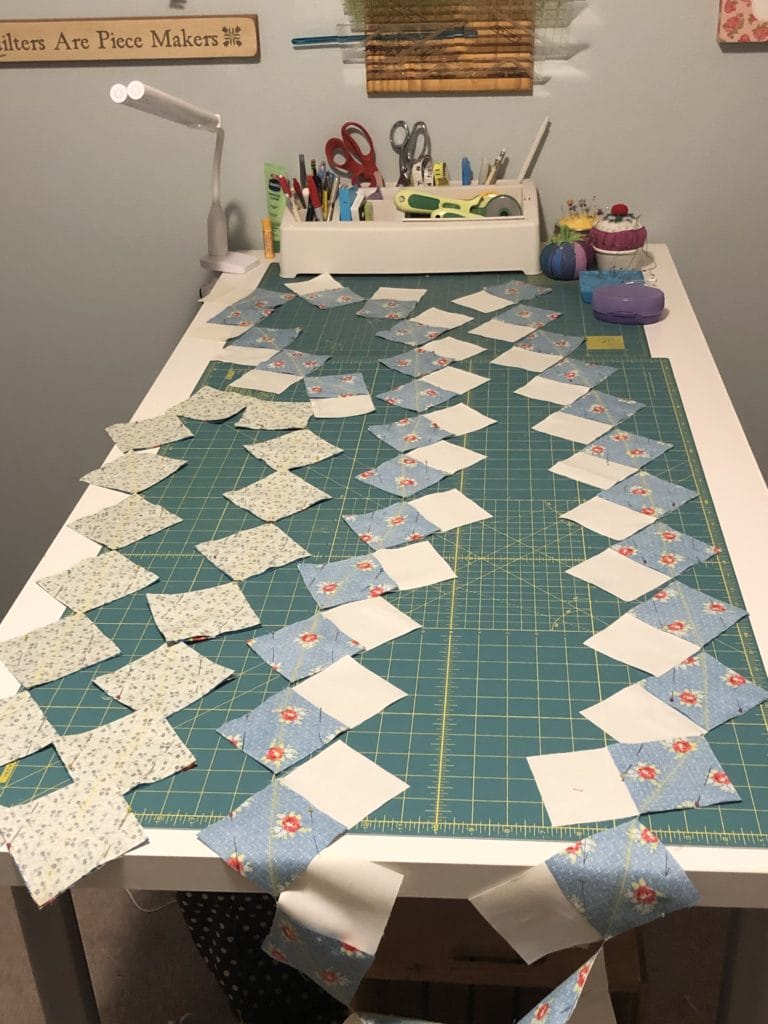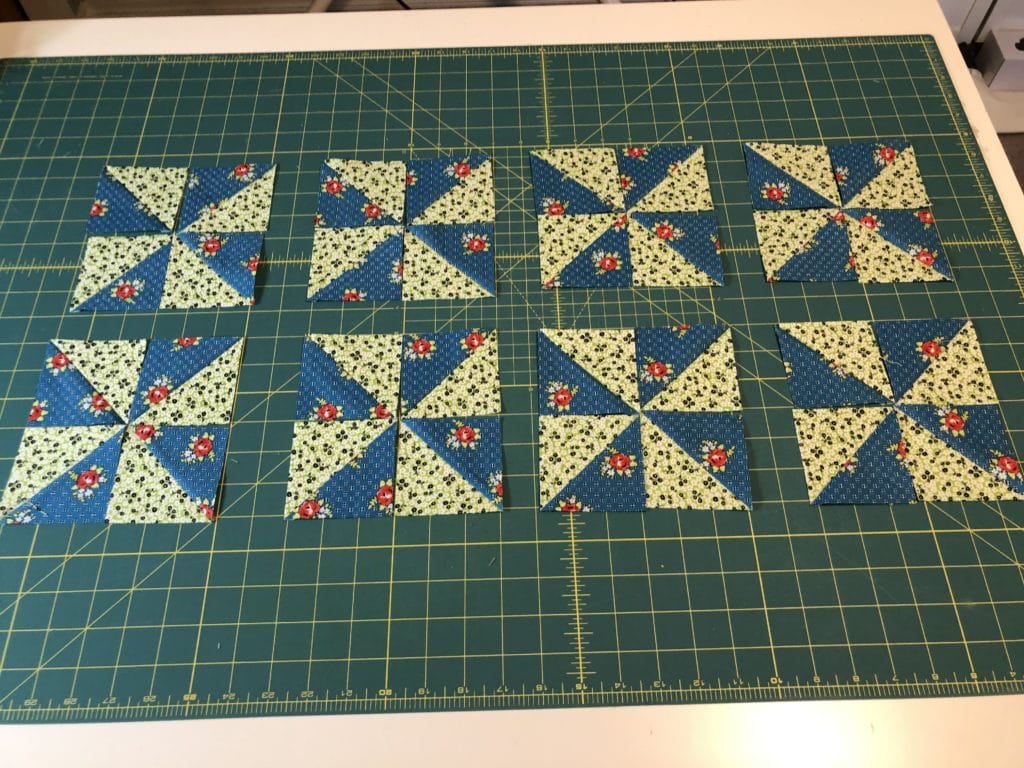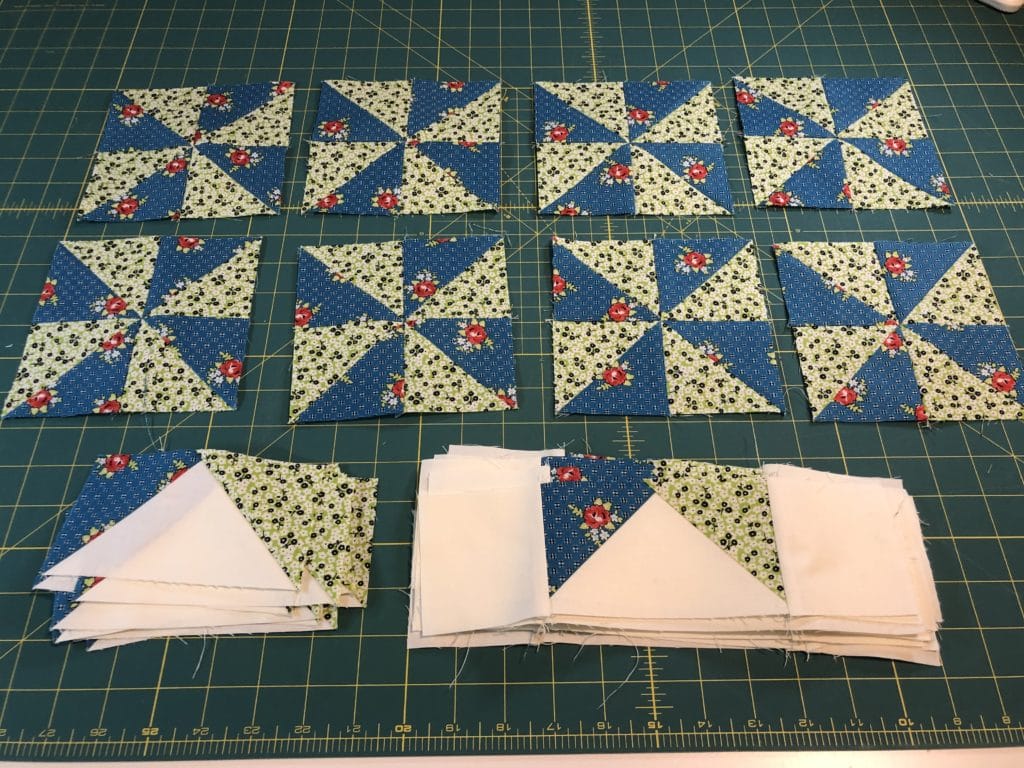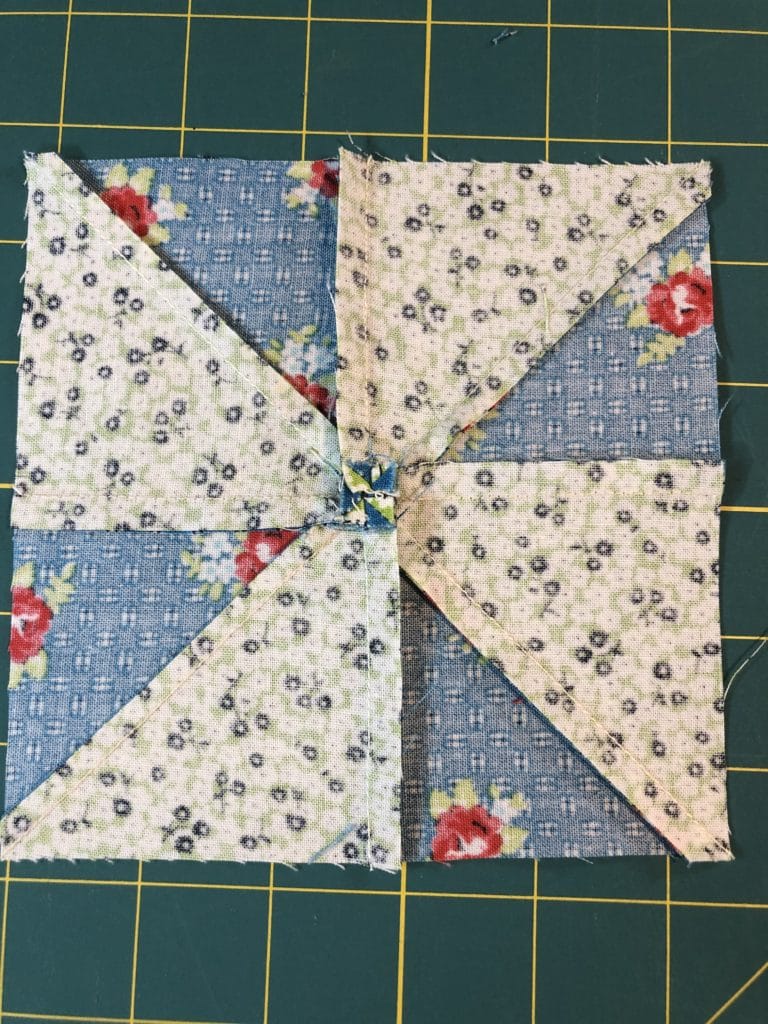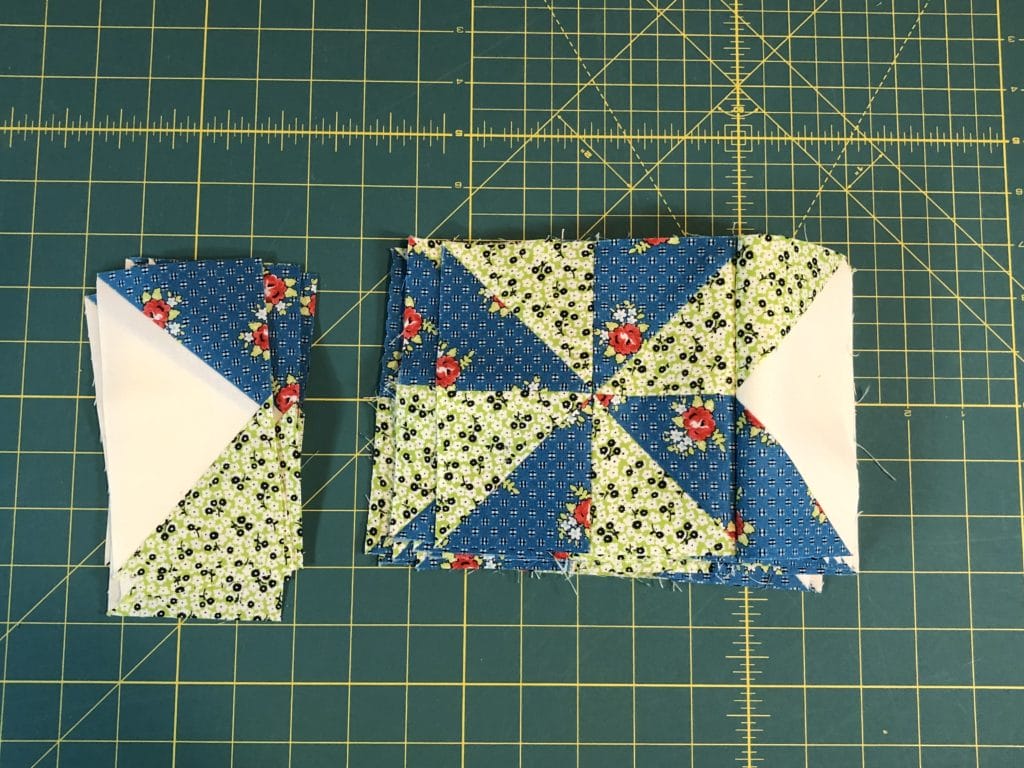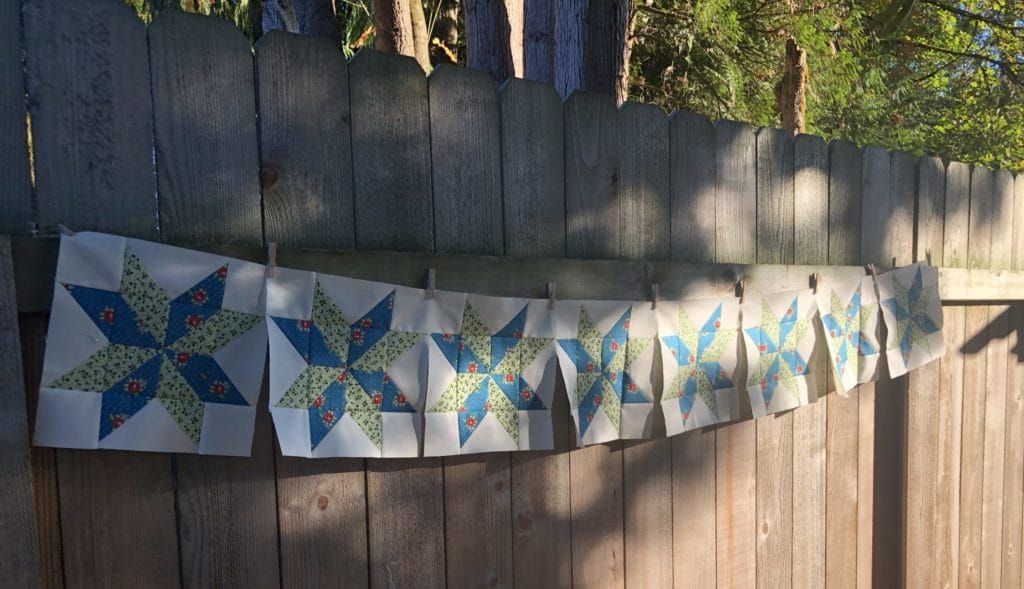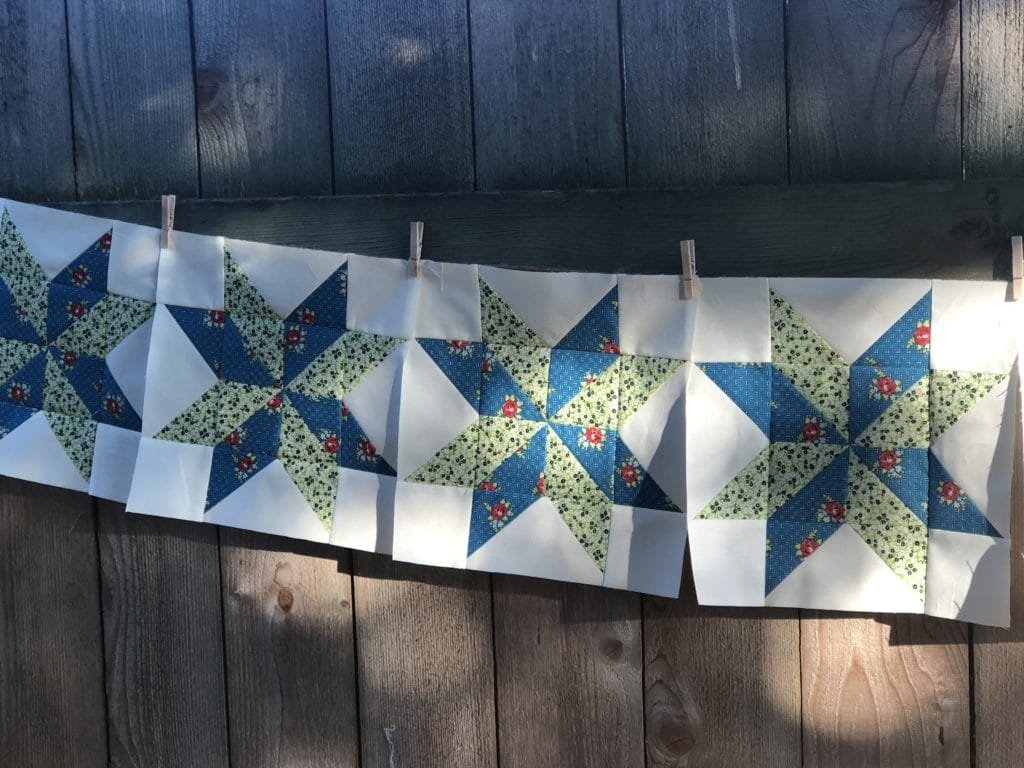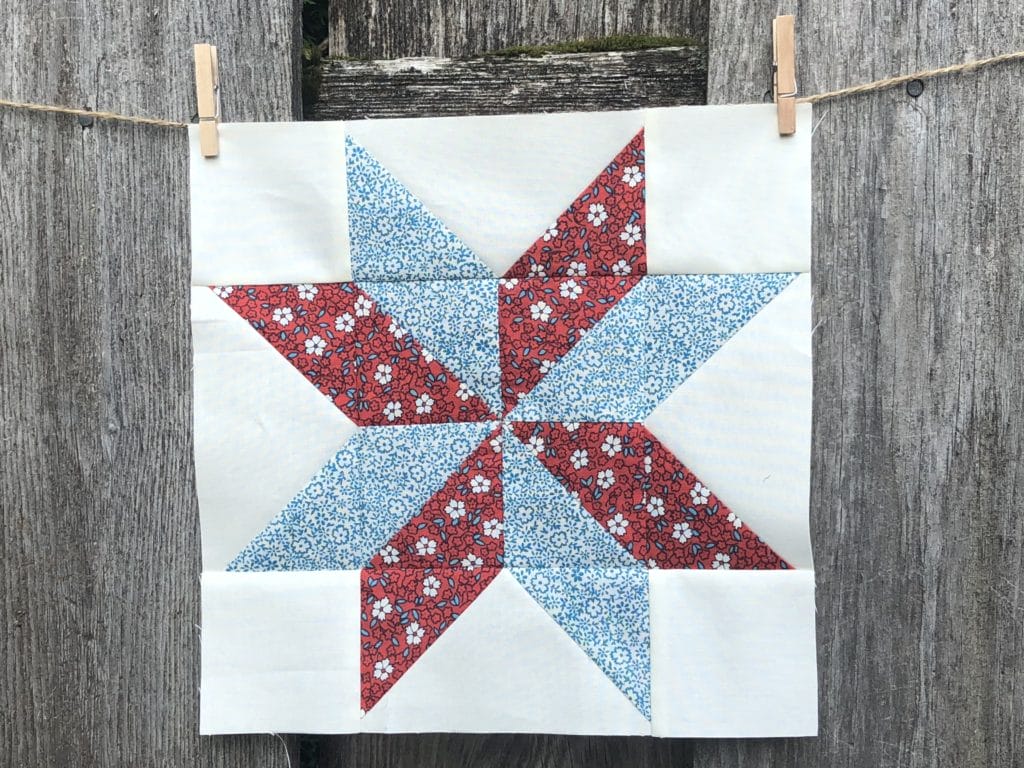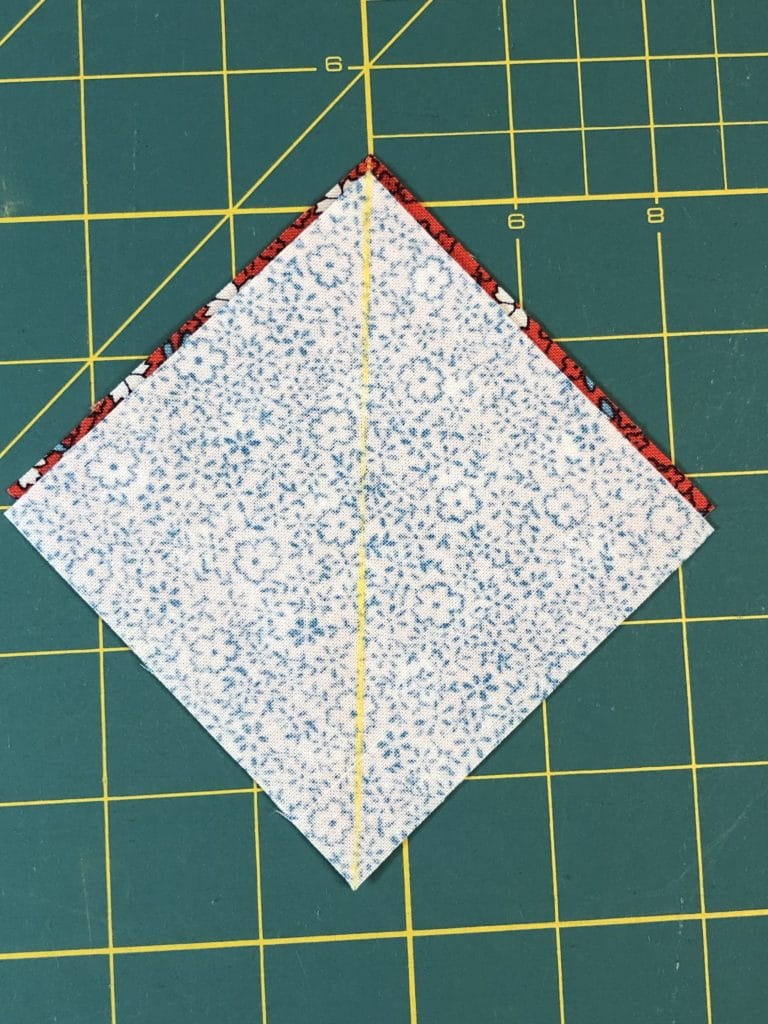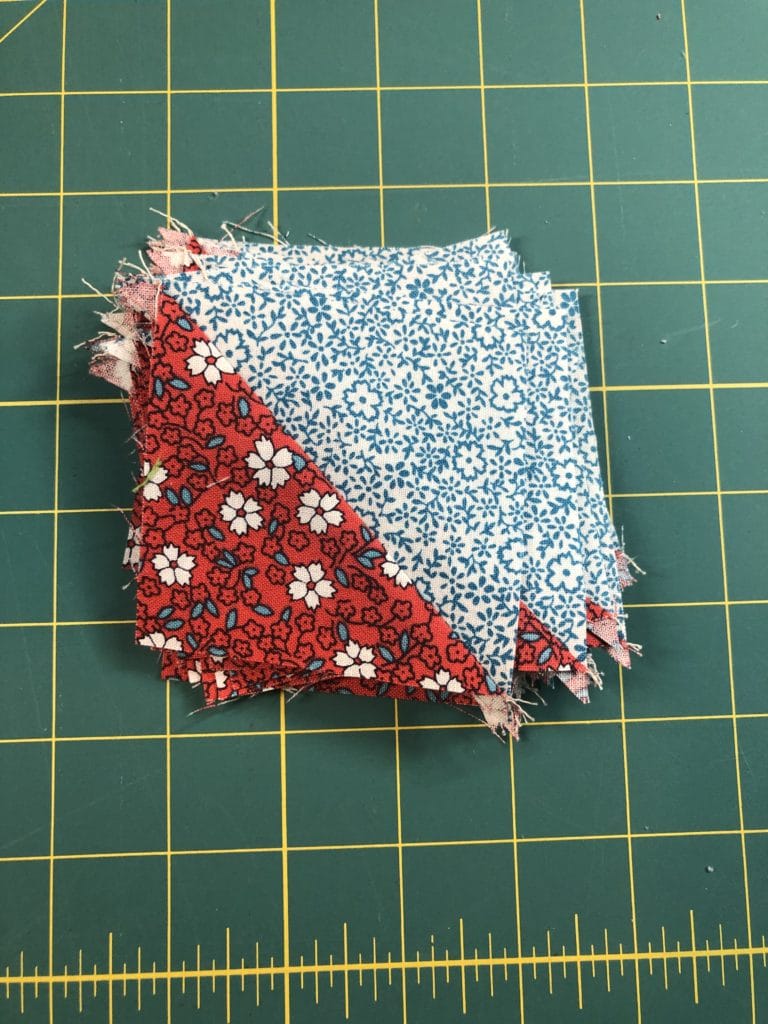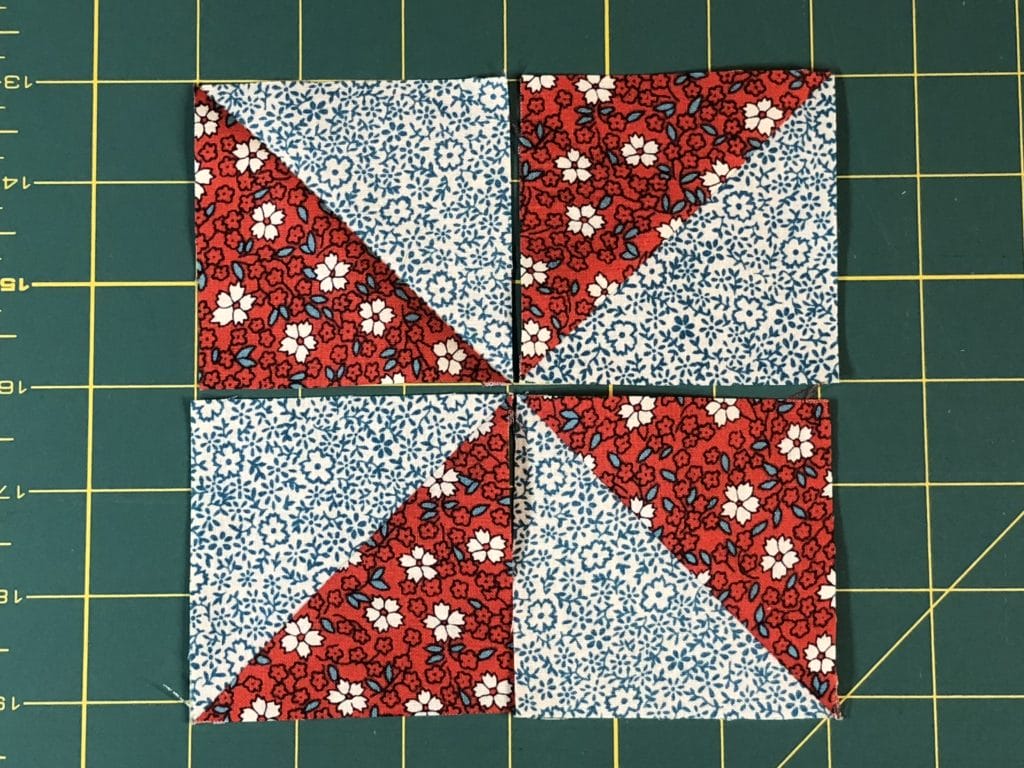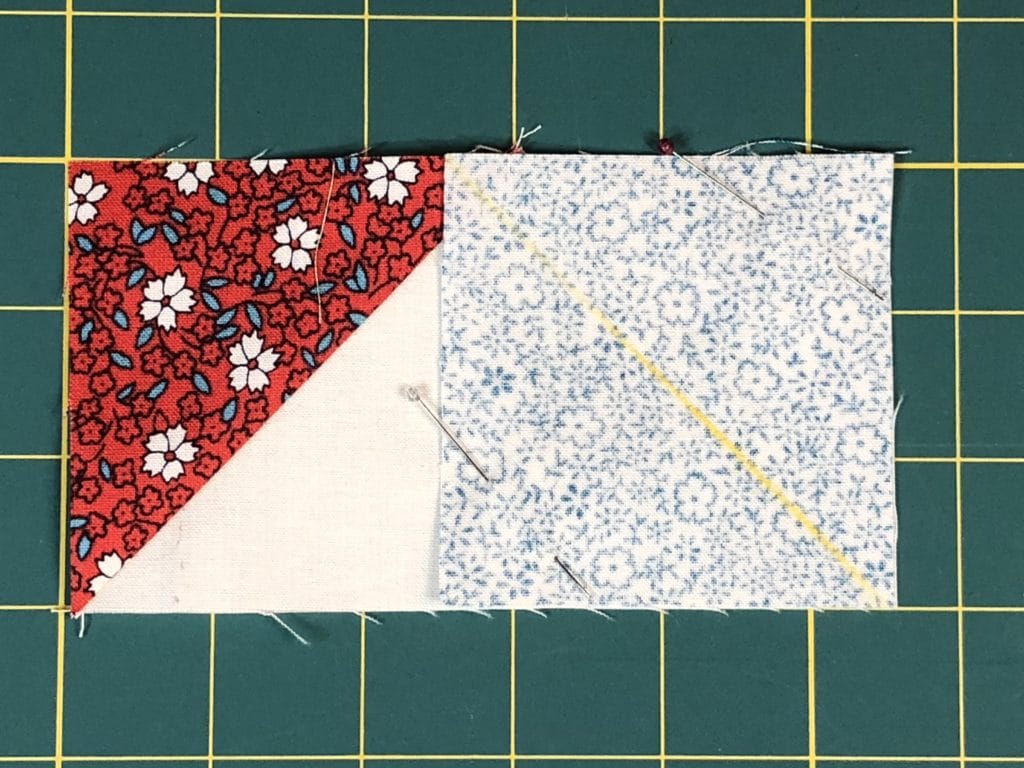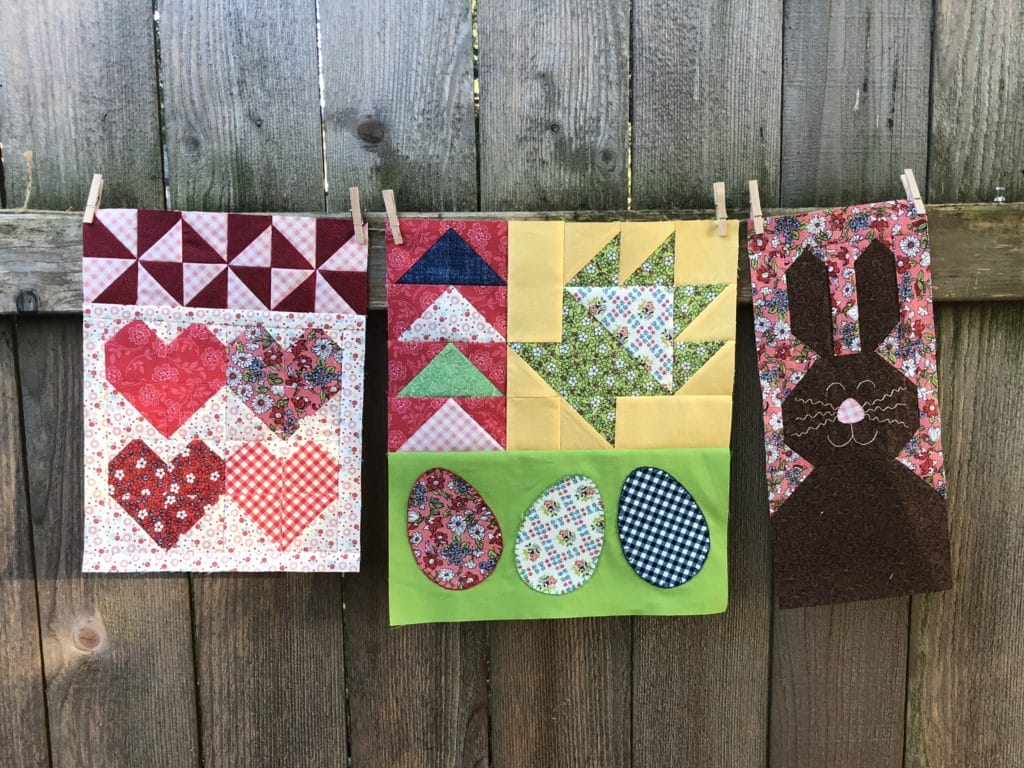
Can you guys believe we are already on month 5? We are on the home stretch! This month we will be making the last three blocks for this quilt, so that next month we can finally put this beauty together and finish! Yay!
Hearts and Pinwheels
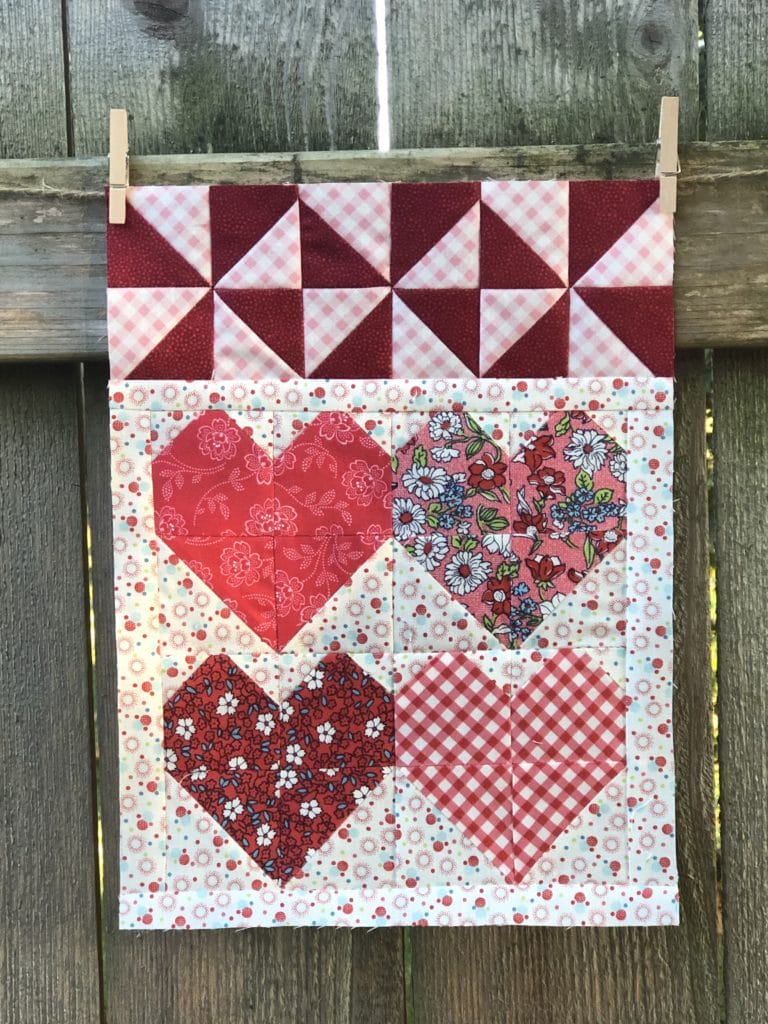
I love pinwheels! I know it can be tricky sometimes to get all the points to match up in the center, but unless I’m way off, I usually don’t get too picky with them. Pinwheels are made from creating half-square triangles and arranging them into a pinwheel block.
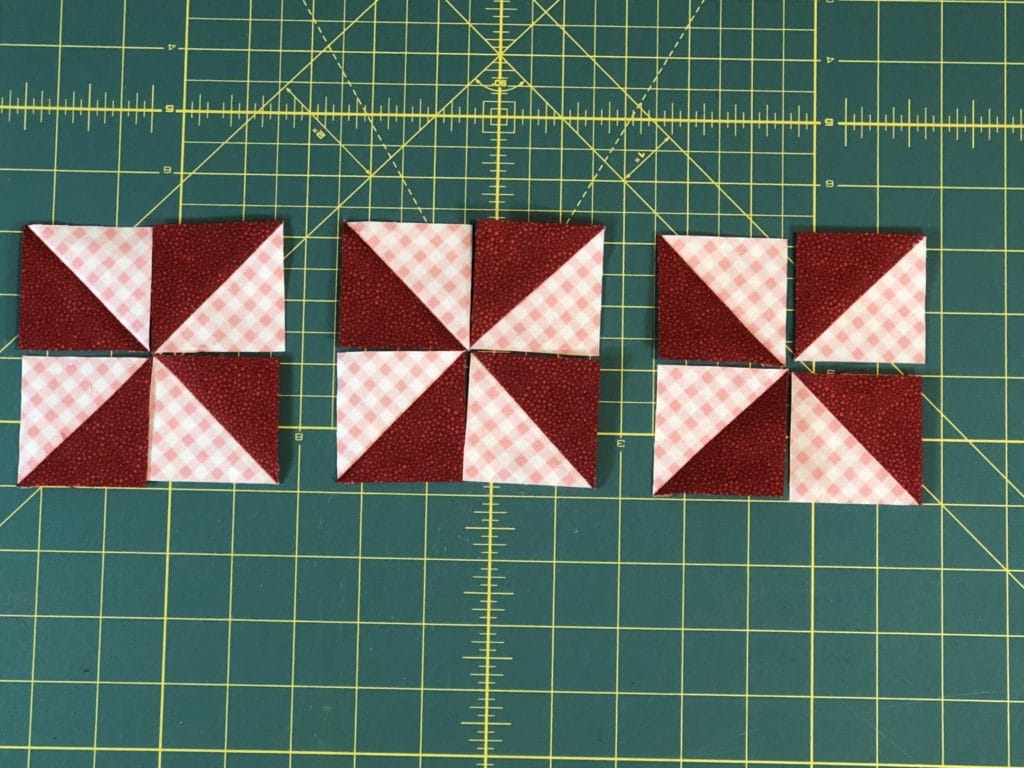
I also open the seams in the center so that they will lay flat when pressed. I don’t know who thought of this idea, but it was a trick I learned years ago. Perhaps many of you do this too. You want to open the seams so that you end up with a pinwheel design on the back side when you press them. It might be hard to make out in the photo, but hopefully you all get the idea.
If you Google “Pressing Pinwheel quilt blocks” You will find a couple of video tutorials that can explain it better than I can here.
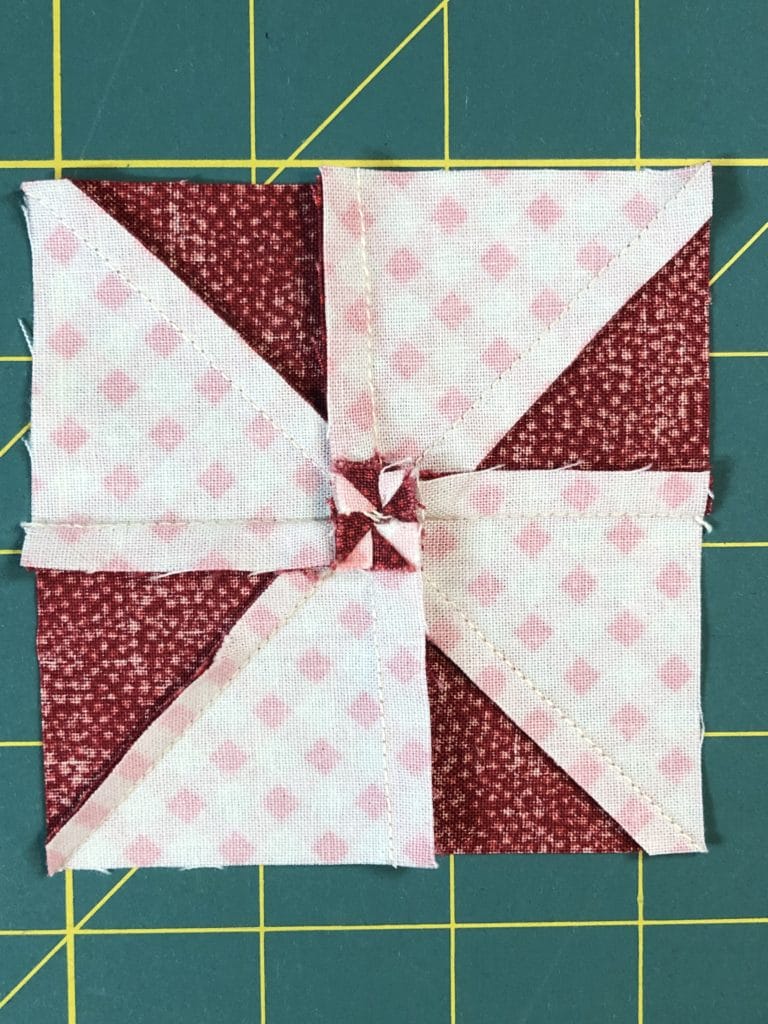
Now it’s on to the hearts portion of this block.
I think these just might be the first hearts I’ve ever designed in a quilt. I’m not sure what that says about me, but in any case, no quilt celebrating all the seasons and holidays of the year would be complete without some sweet Valentine hearts. Here is how I put mine together:
I like to do a lot of assembly line sewing, so I’ve laid out all the units sew I can sew everything at the same time.
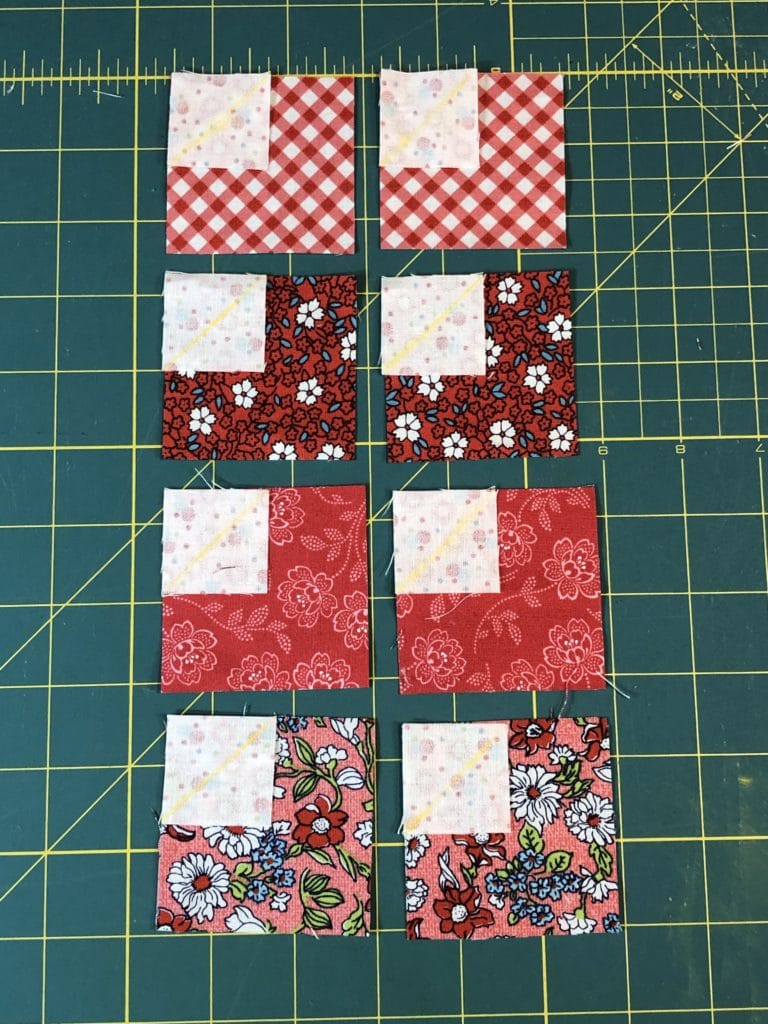
Make sure after you sew the first “C” squares on that you iron the seams downward toward the “H” squares as shown below. The second “C” square will be ironed upward. This will allow the seams to nest together later.
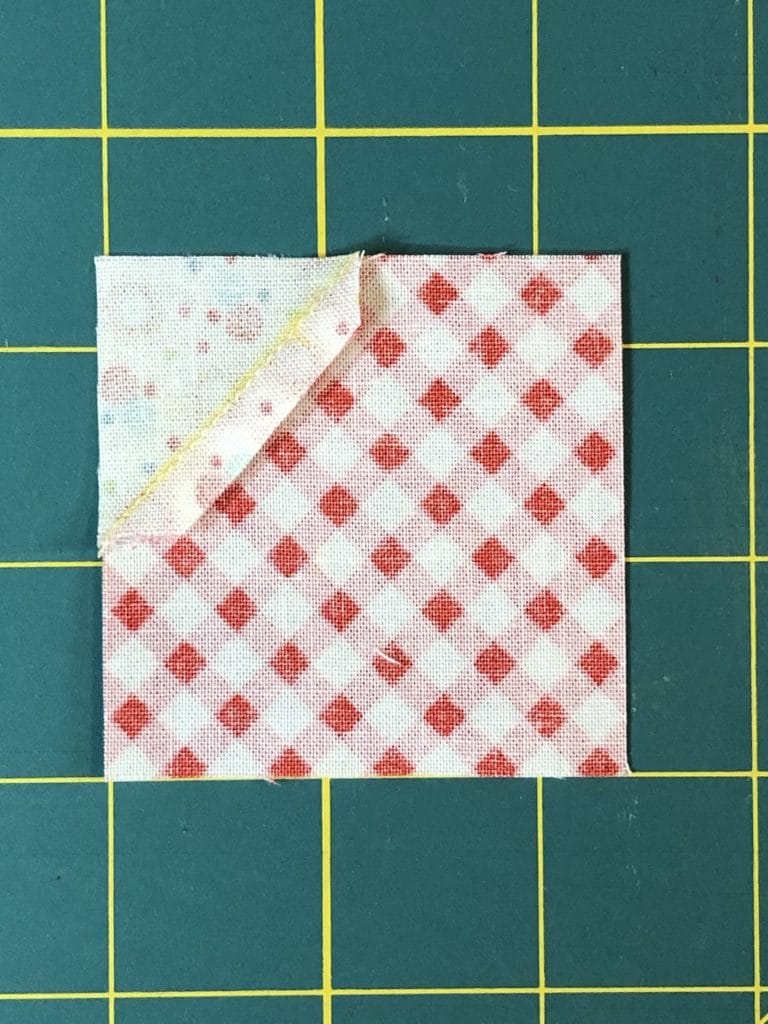

Below you can see I’ve laid out my C/H pieces with the Half-Square triangle units I made in step 5 of the pattern.
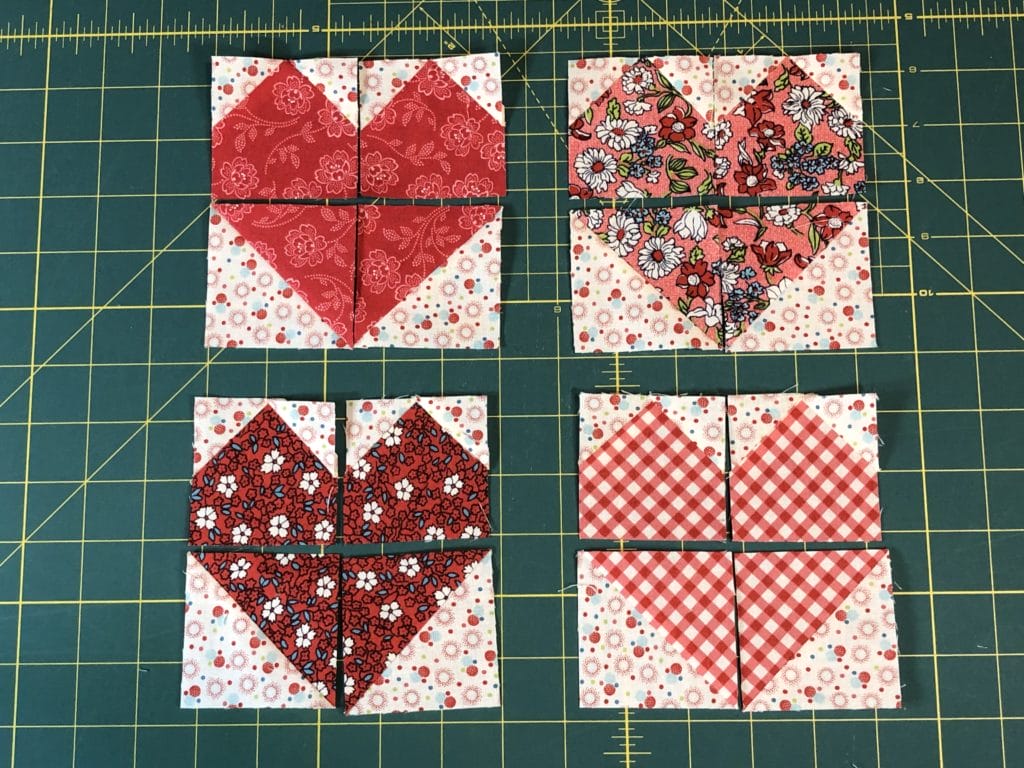
Once the individual hearts are sewn we can put them all together and add the narrow borders. When you sew the four hearts together, you may choose to press the seams open to reduce bulk, or you can re-press some of the seams on the hearts to allow them to nest together.
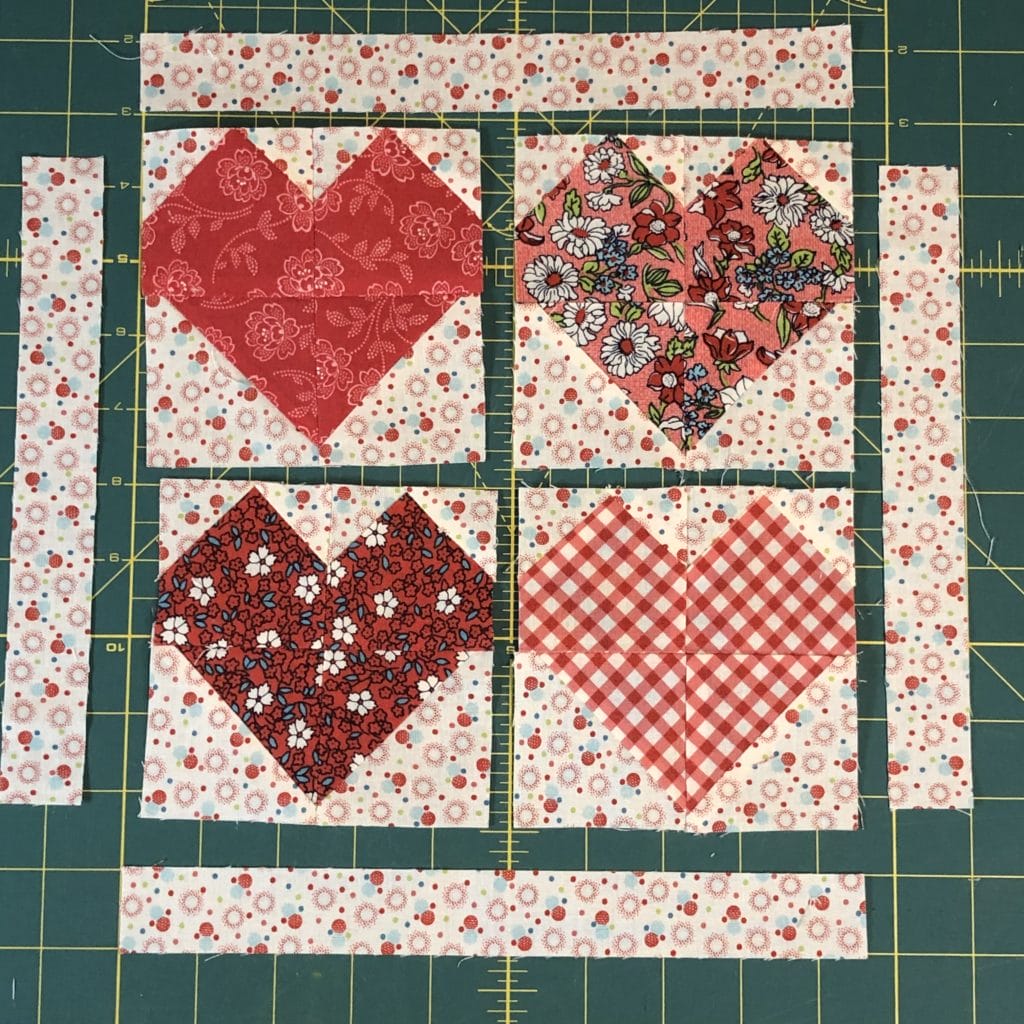
Here is a photo of the back side of my block. You can see that I chose to adjust some of the seams within the individual heart blocks so that my seams would all nest together. But pressing the seams open works just fine too, so as I always say, do what makes you happy.
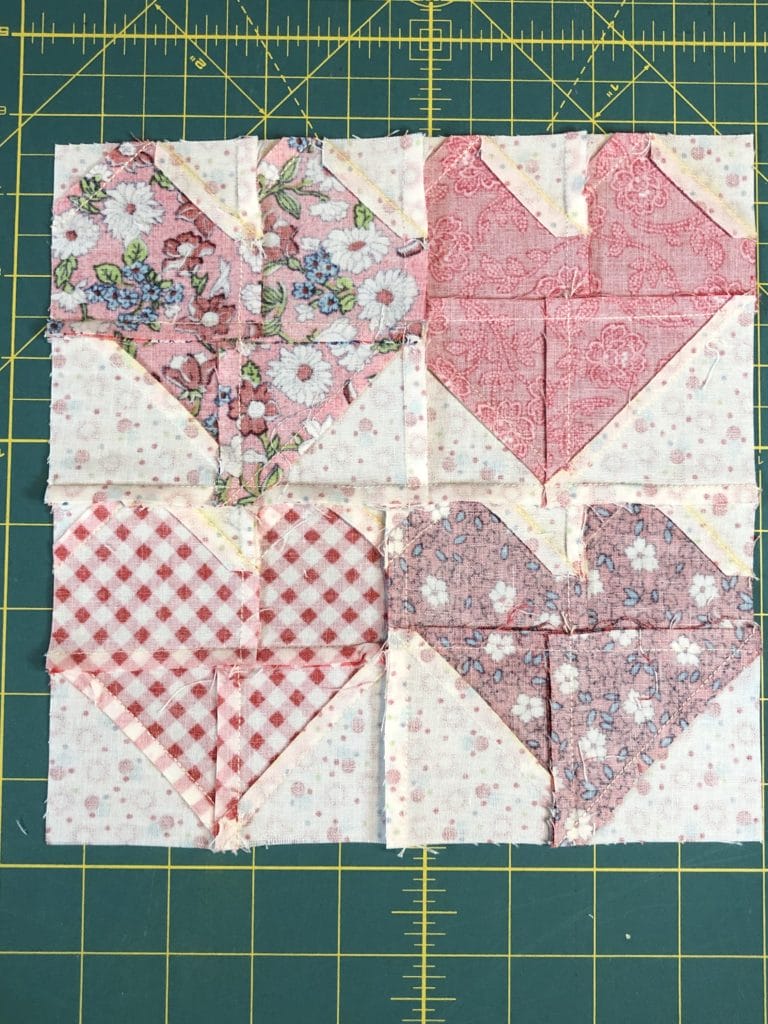
And now we can add the pinwheel row to the top to finish the block!

Springtime Block
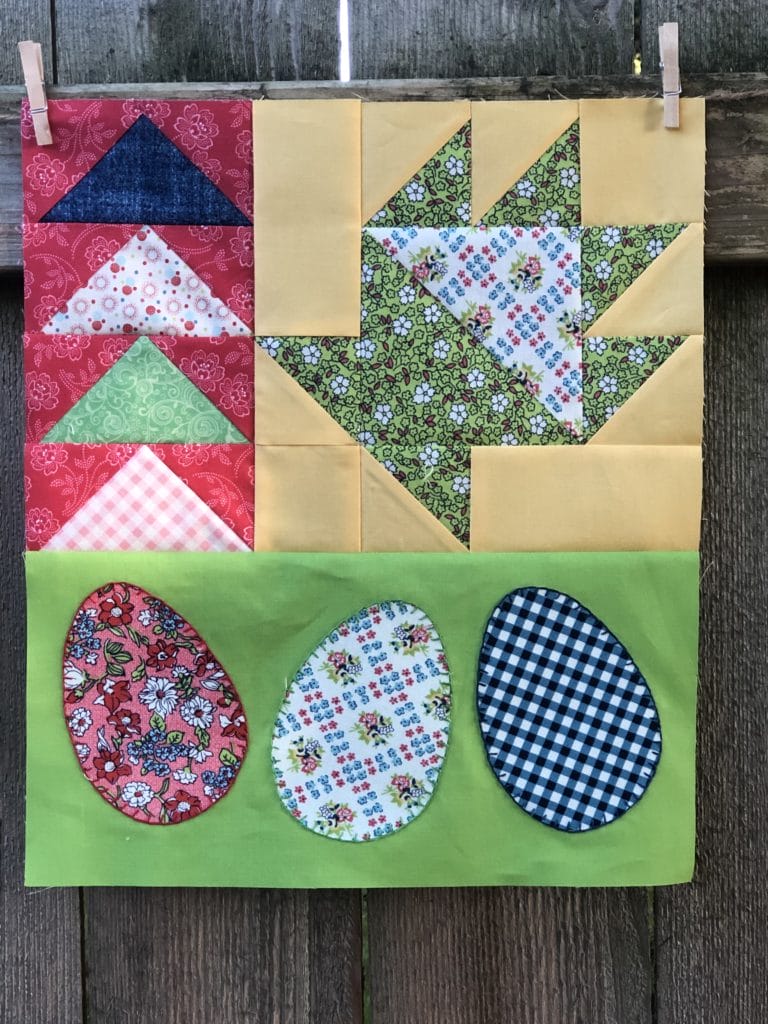
For the Eggs applique, this time I decided to do some hand stitching with some embroidery floss. I went for thread colors that would help the eggs pop a little more. For some reason I can’t ever seem to make a quilt the same way twice! I really tried to behave myself throughout this project, so that you could see it sewn as the original, but this time I just couldn’t help myself!
The basket just some squares and Half Square Triangles sewn together, so it hopefully isn’t too difficult for all of you. Just pay close attention to the instructions and pressing directions. This will enable the seams to nest together when it is sewn to the flying geese section.
Don’t forget in step 3 to sew each pair of A/D squares going opposite of each other, just like in the photo below.
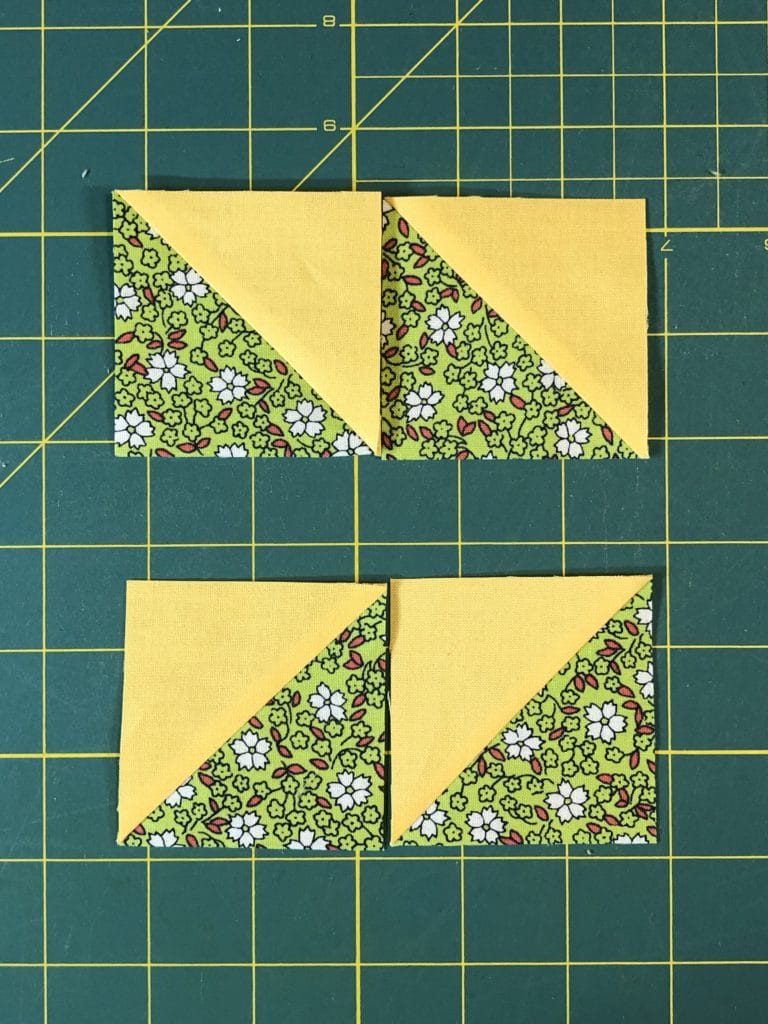
These units below are from step 5, and are mirror images of each other as well.
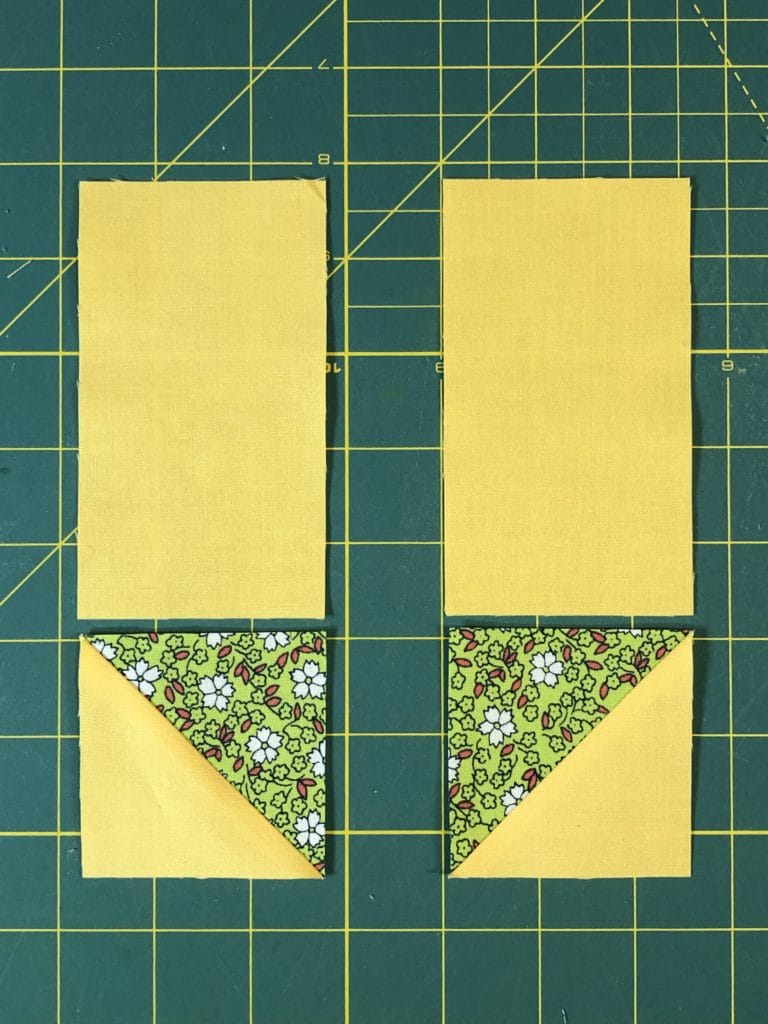
And now I’ve laid out all the components for the Basket Block and I’m ready to sew it all together.
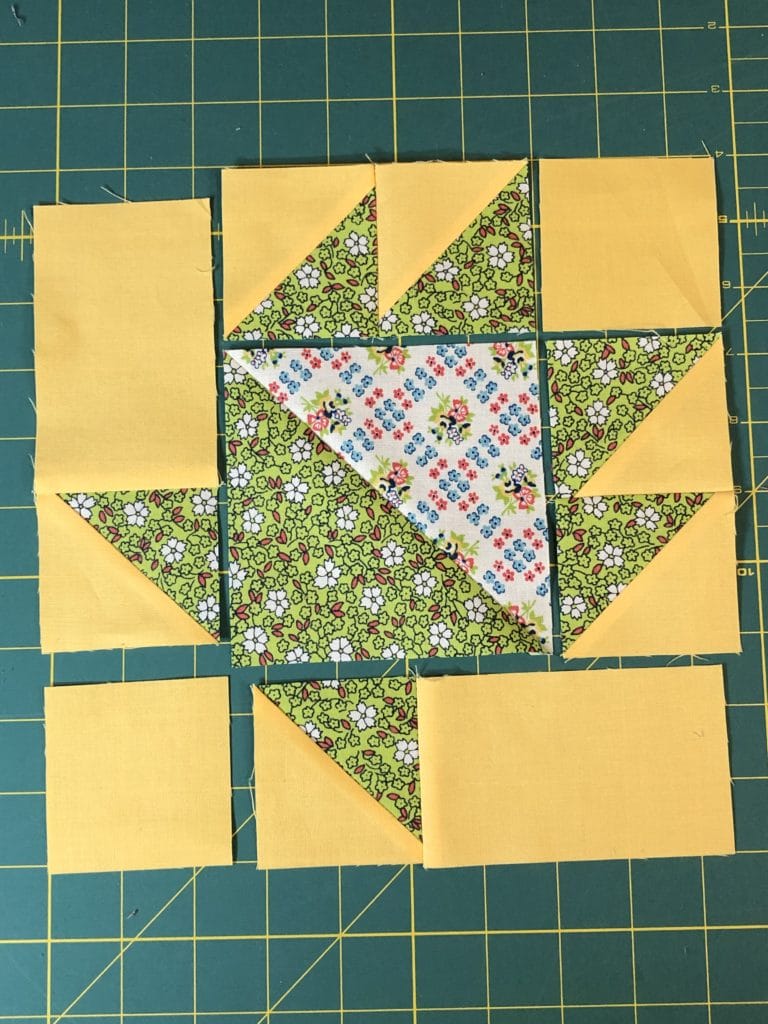
Flying Geese unit
Here are some photos of how I made the little row of flying geese. I know sometimes flying geese can be a pain to make. I’ve found that if I sew just BARELY inside the line, I end up with a better looking unit when I’m done.
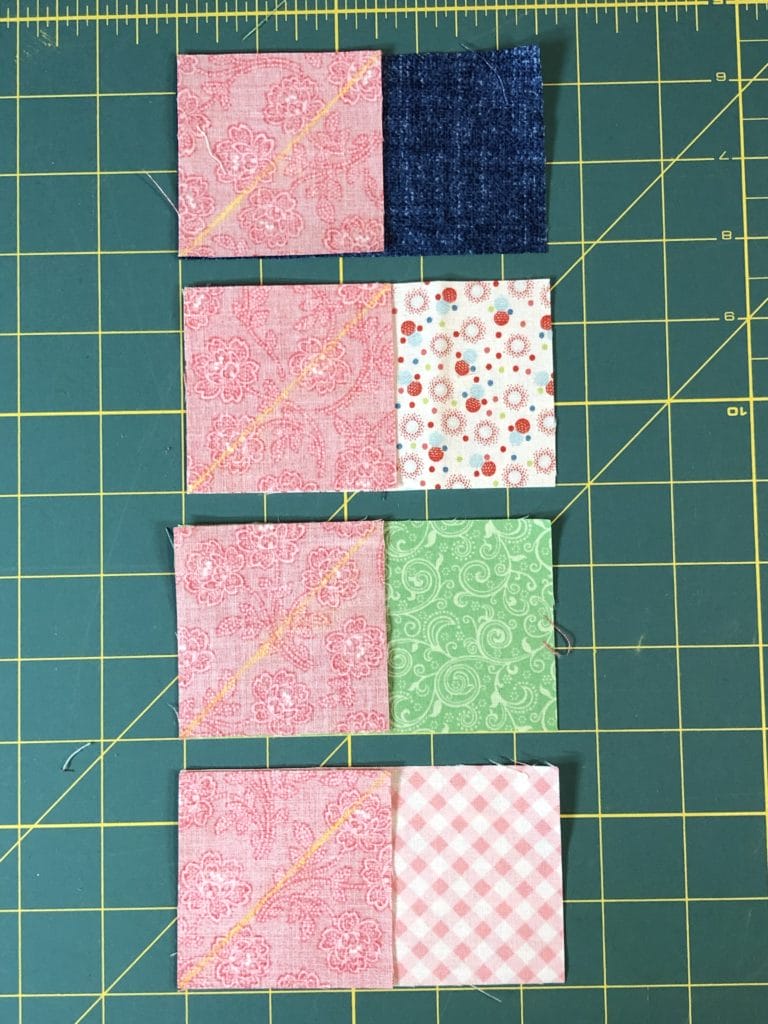
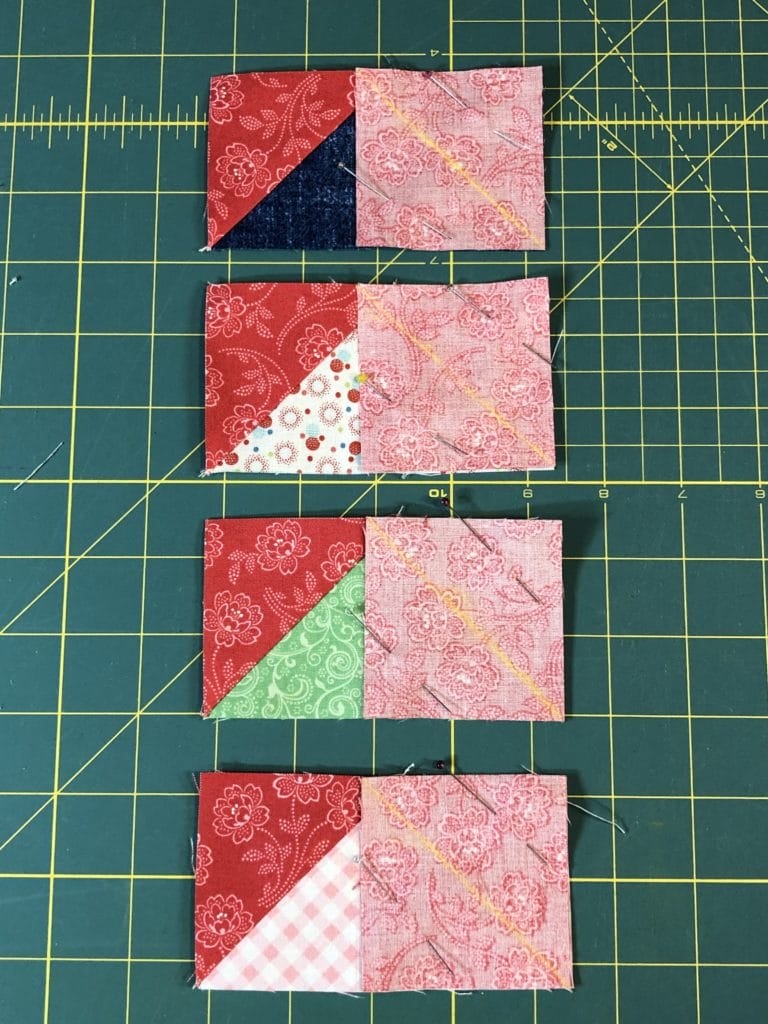
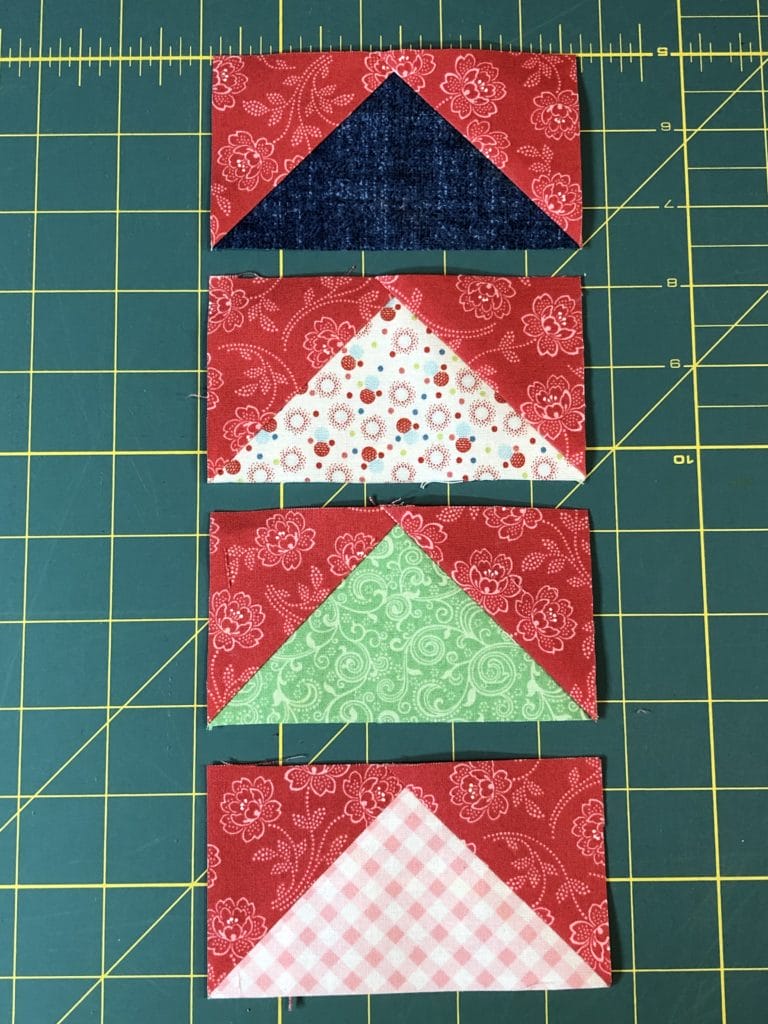
Now all the units are ready to sew together! Except of course, if you look carefully at the photo below, I still have yet to stitch around my eggs. Apparently I forgot to take another photo after doing that, but before I finished the block. Oops! Sometimes I get carried away with my sewing and forget I’m supposed to be taking pictures too.
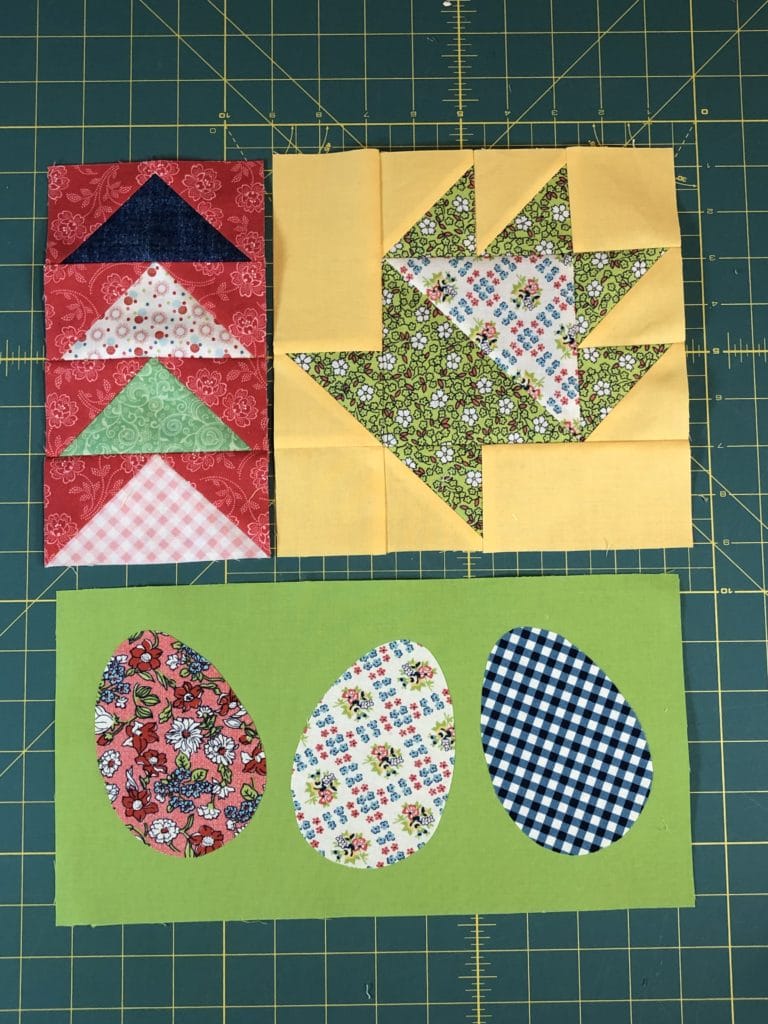
Bunny Block
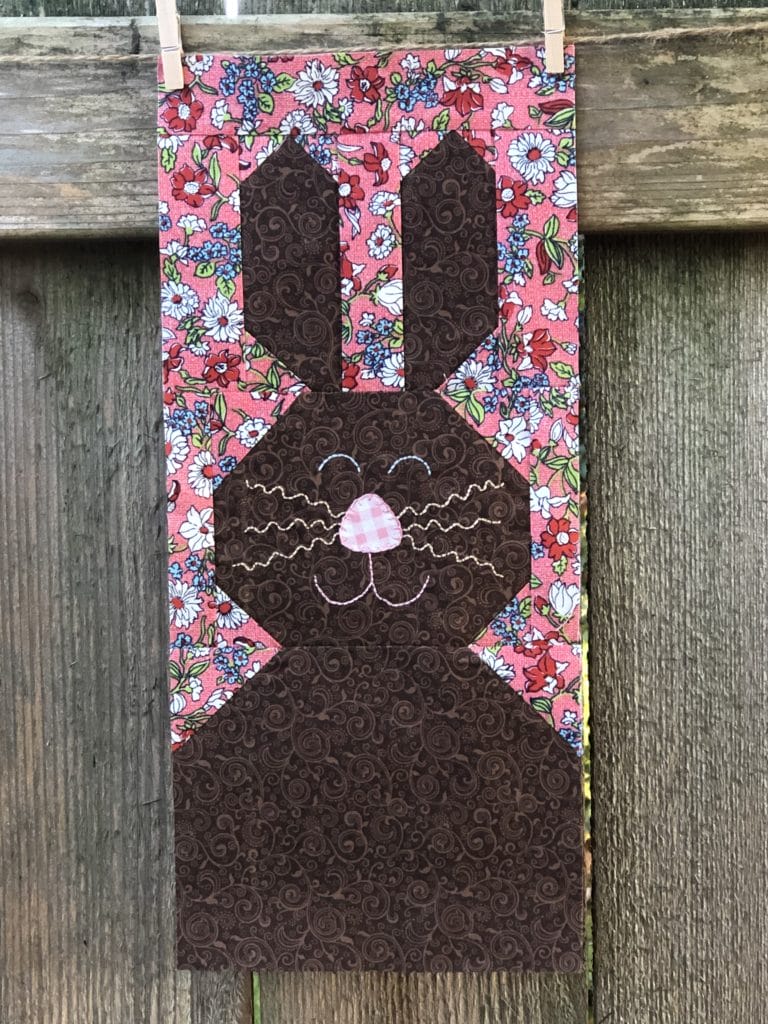
This little cutie is one of my favorites on this quilt. Here is how I put it together:
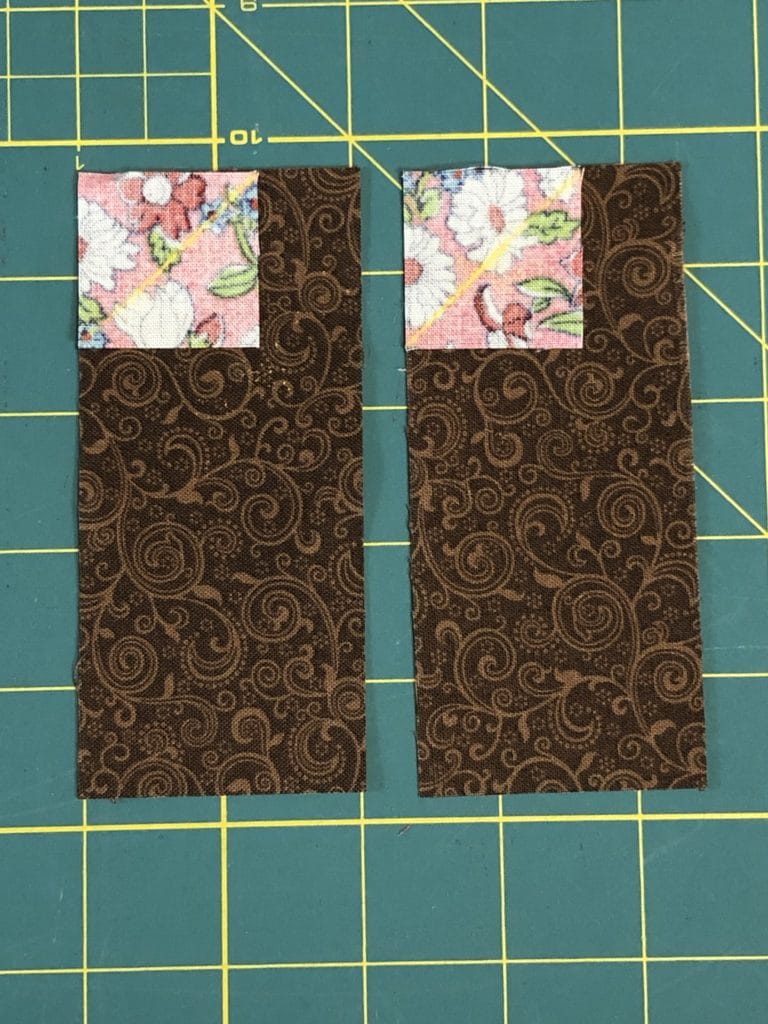
Once the ear points are done on top portion, you need to sew one E square to the bottom each unit, making sure the ears will be mirror images of each other. So as you can see below, one E square goes on the bottom left, and the other E square will be sewn to the bottom right.
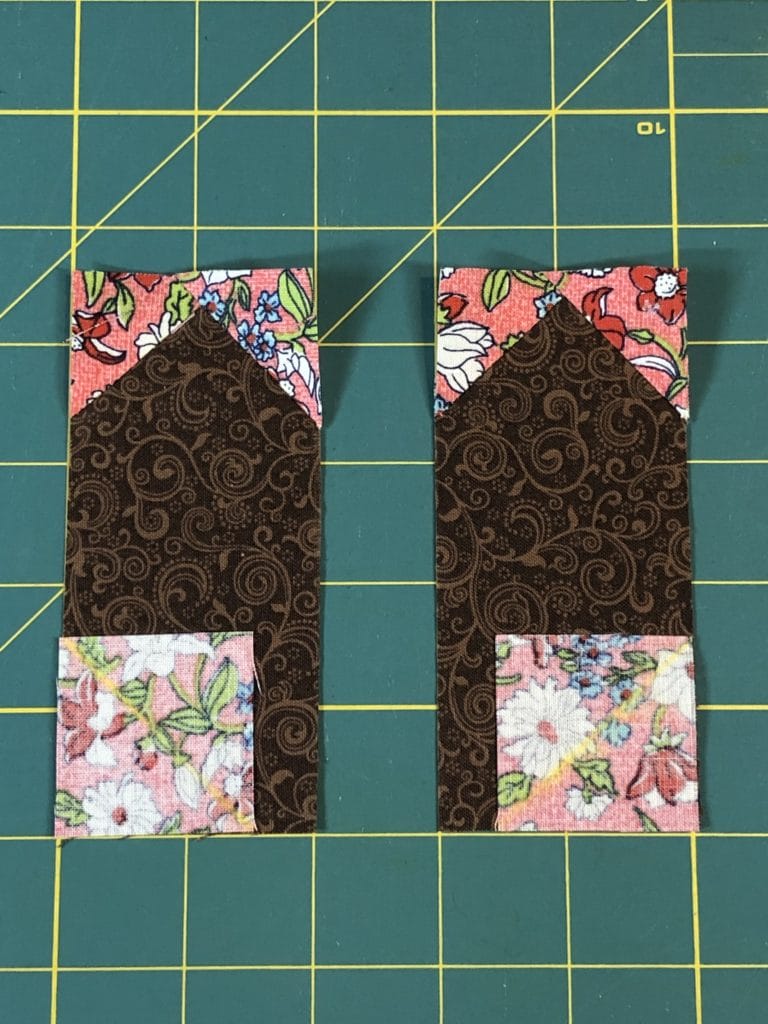
And now you can sew the B strips in between the ears.
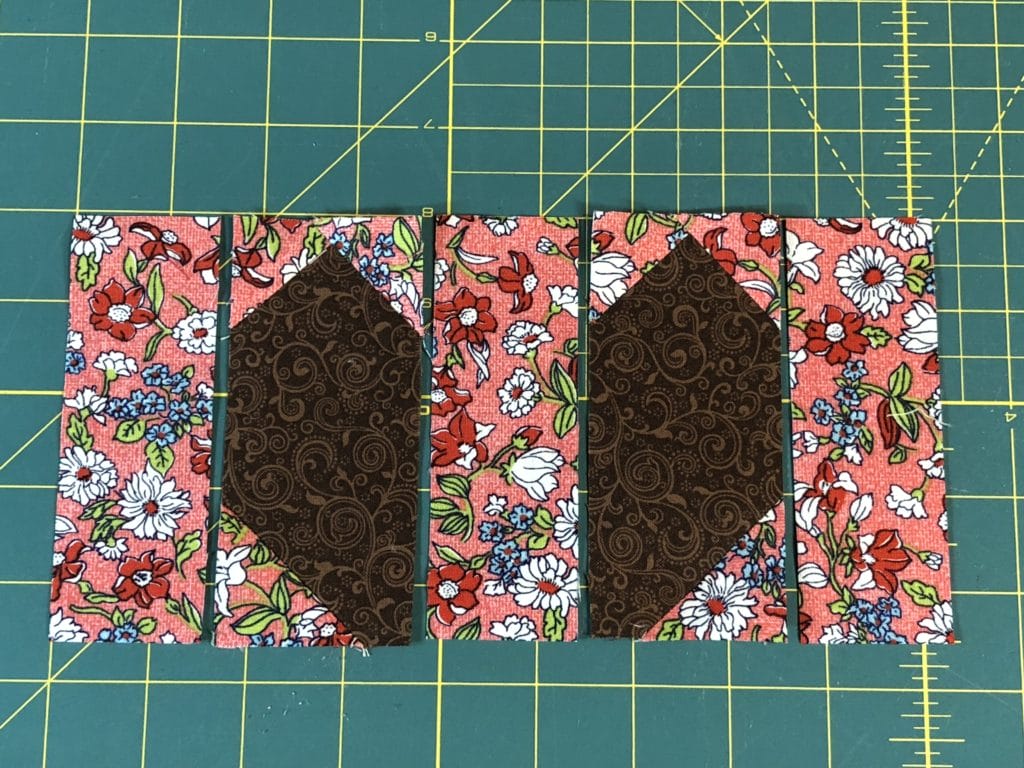
The face and body units of the bunny go together pretty much the same as the ears, by sewing the various squares on marked lines, then trimming and pressing as directed. Just make sure that your bunny’s head has the larger F triangles at the top and the smaller E triangles are at the bottom.
Now we can sew all the components together. If you look at the photo below, you may notice two things missing: 1.) I still haven’t sewn on the bunny’s face. 2.) I forgot to add the A strip to the top of the ears. Clearly I can’t follow directions, even when they are my own! But don’t worry, I fixed it all, as you will see.
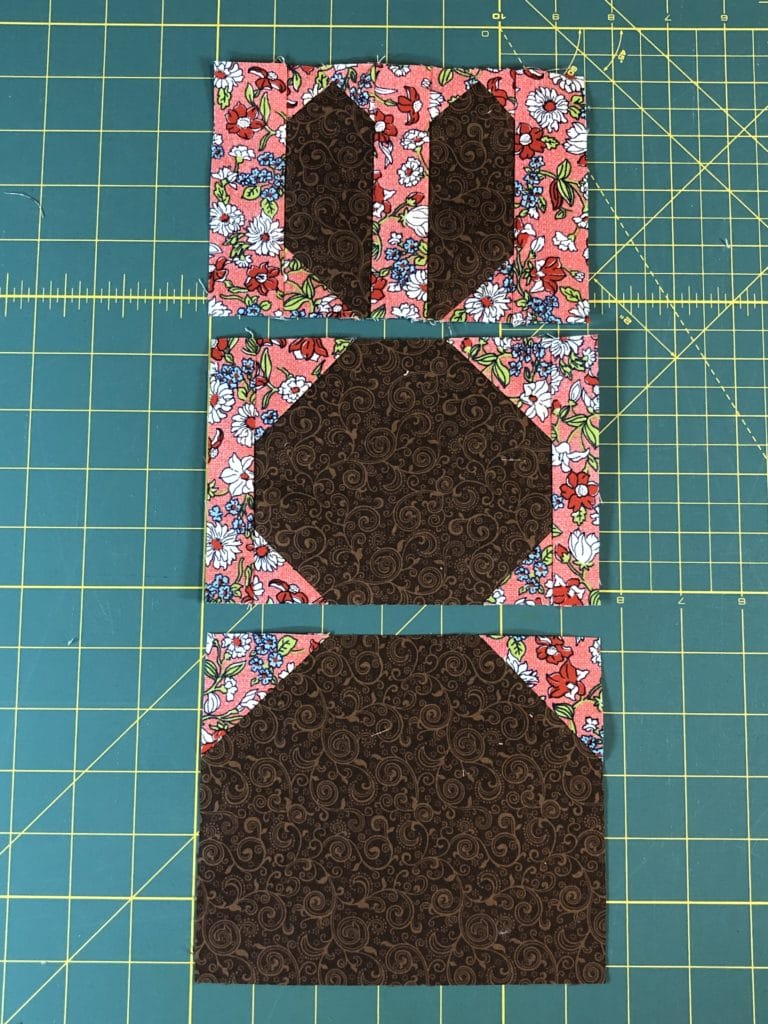
For the face, this time around I decided to go crazy and use some different colored threads for the eyes, whiskers, nose, and mouth. In the pattern it says to use white embroidery thread, but I can’t ever seem to do the same thing twice. I guess I get bored easily?
Anyway, I decided to use a light blue thread for the eyes, some tan for the whiskers, and then a light pink for the nose and mouth. If I were to make this bunny a THIRD time, I would probably use a darker blue for the eyes, and also perhaps use a darker pink fabric for the nose too.
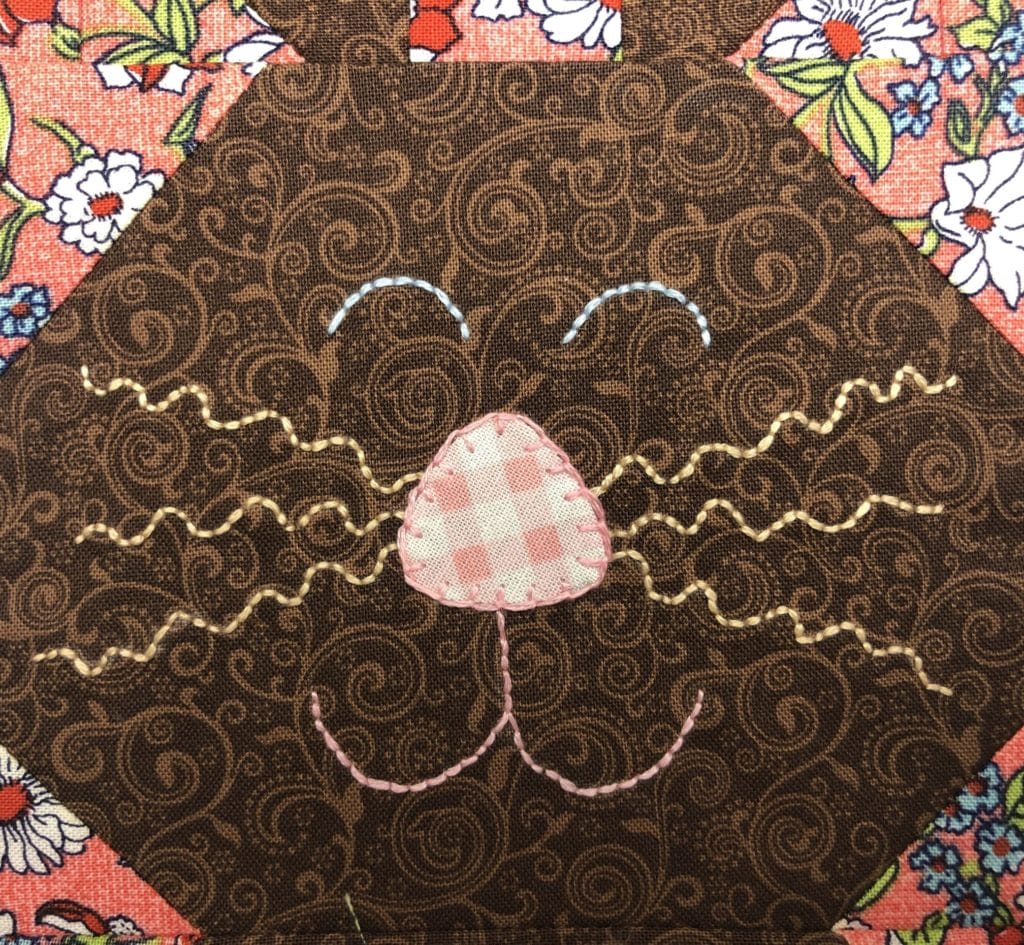
To trace on the face, I used Saral transfer paper in white. I’ve had mine for forever, and I bought it from Connecting Thread’s sister company called Artist’s Club, which is no longer in business. It comes in either a roll or sheets, and they both work equally well. I checked online and you can get it at most major retailers.
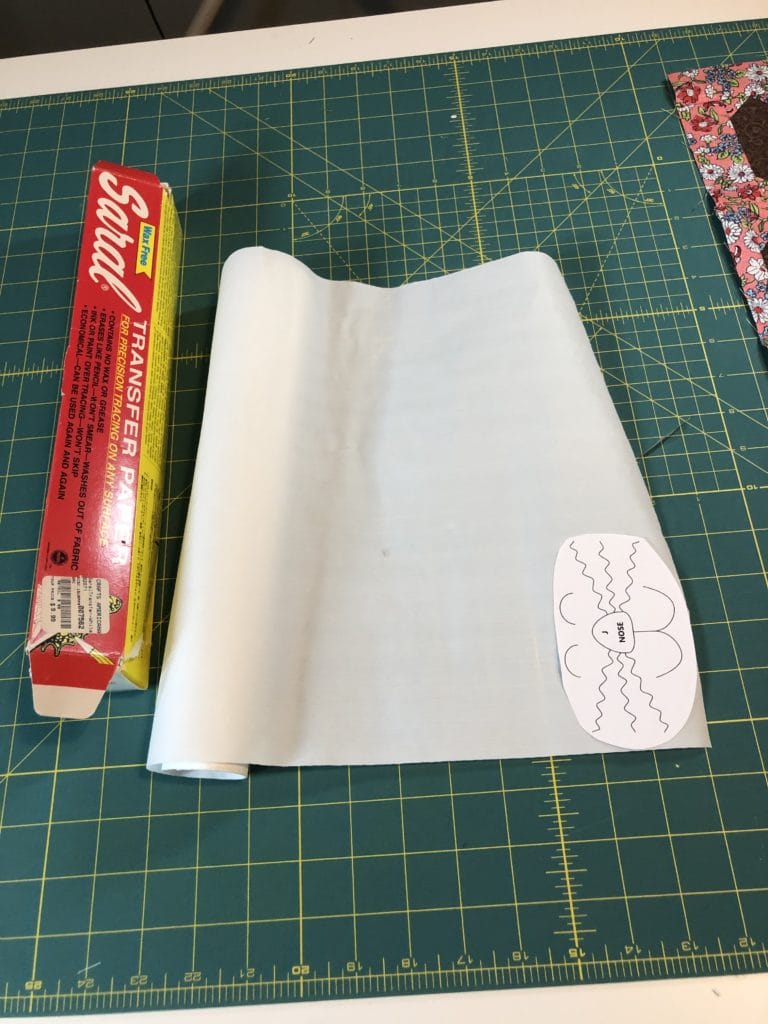
I cut out the face from the pattern, and then slipped a similar sized piece of the transfer paper underneath to trace it on to the brown fabric. I just eyeballed where I wanted it, trying to make it centered from right to left. I used a stylus to trace on the lines.
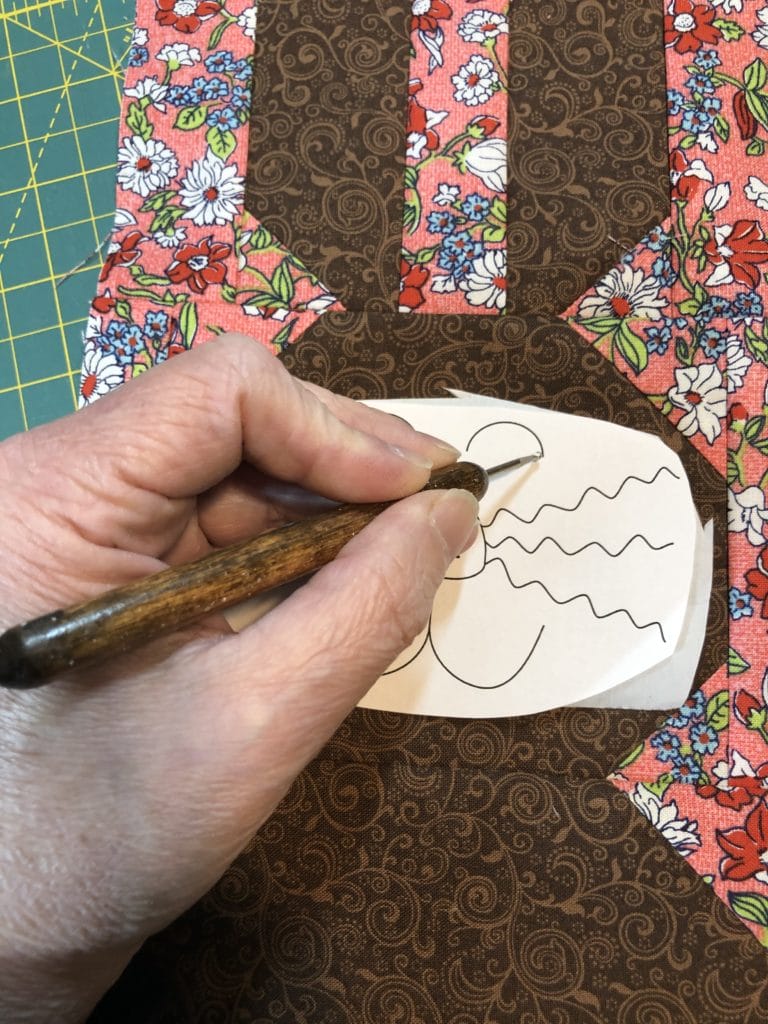
As you can see, the lines are faint, but it was enough for me to see where to sew.
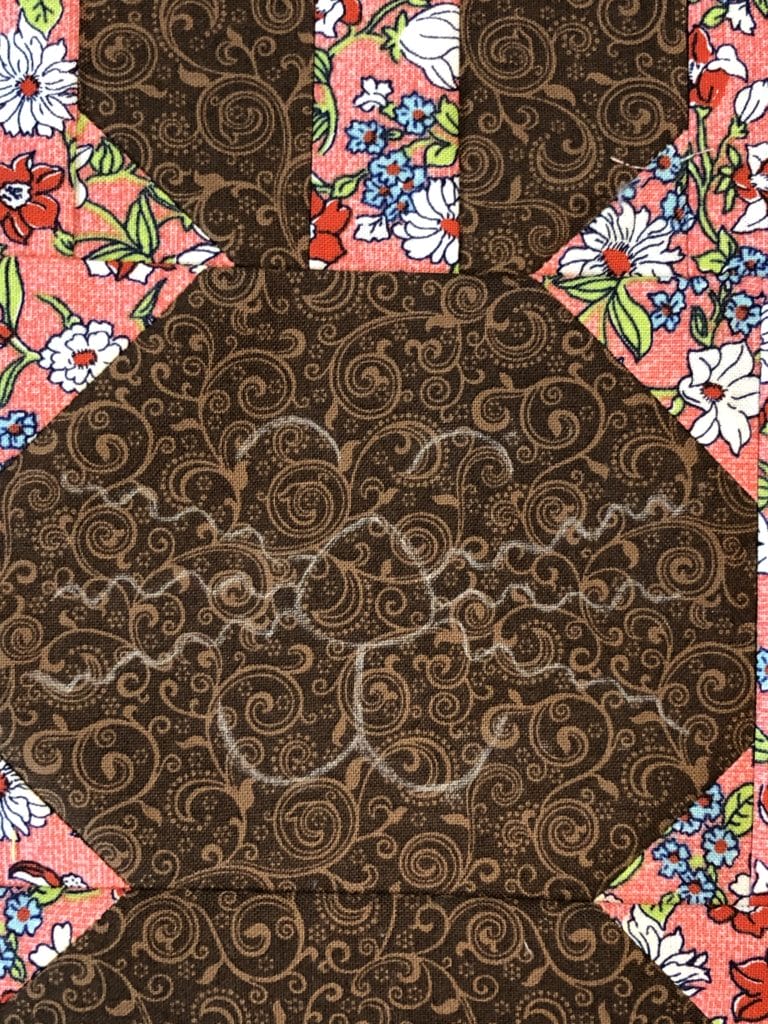
And, I also noticed that I have the bunny’s nose UPSIDE DOWN. Sheesh! How did I not notice it until now?! Quite embarrassing! Clearly I don’t look at a lot of bunnies in my day to day life, because I designed and wrote the pattern this way, and didn’t even realize it until this week. So, feel free to turn that nose around so that your sweet bunny can have a normal face haha! Or, your bunny can have a backwards nose like mine. I figure when this quilt is all put together, most people won’t notice, right?
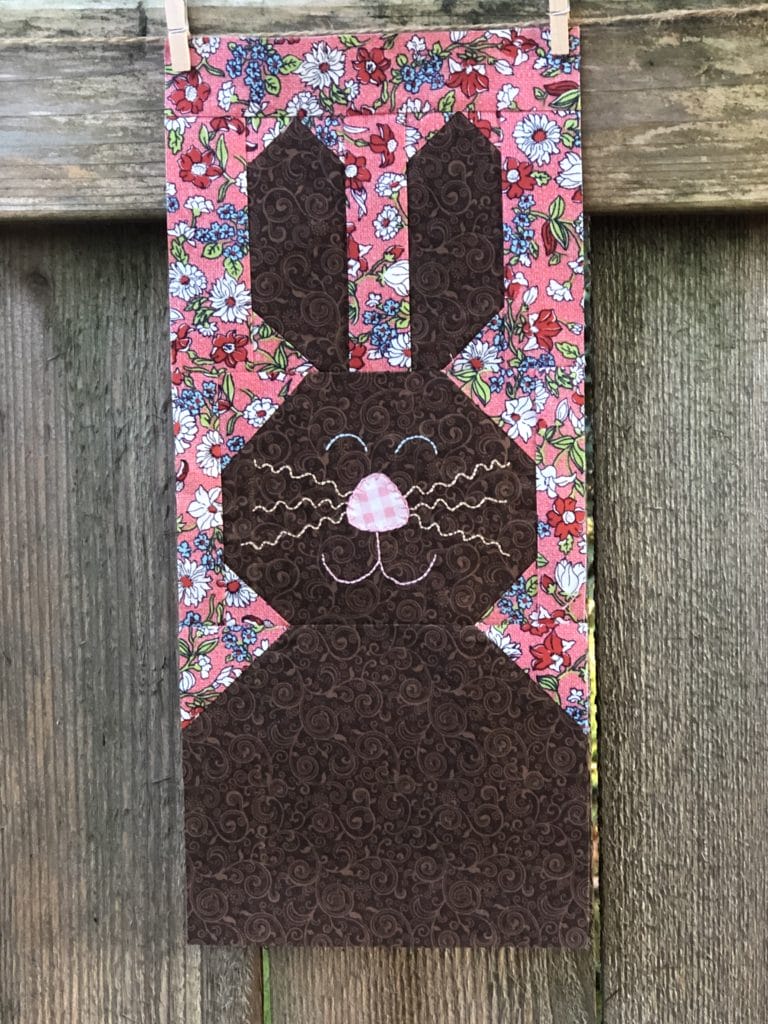
I hope you’ve enjoyed making all these blocks. I’m so excited for next month when we finally get to put it all together!



 Tutorials
Tutorials